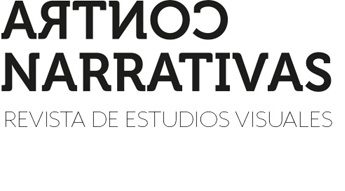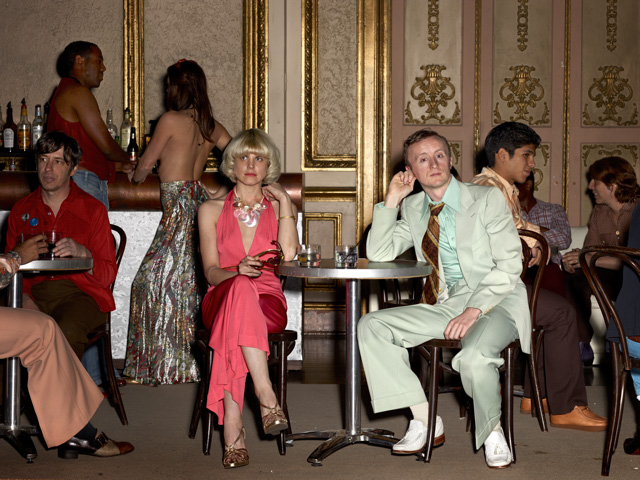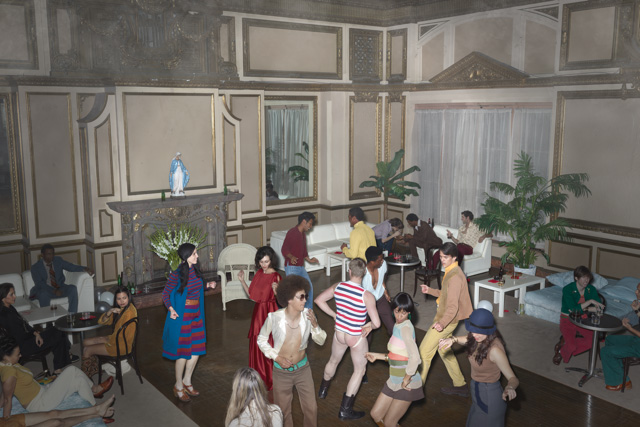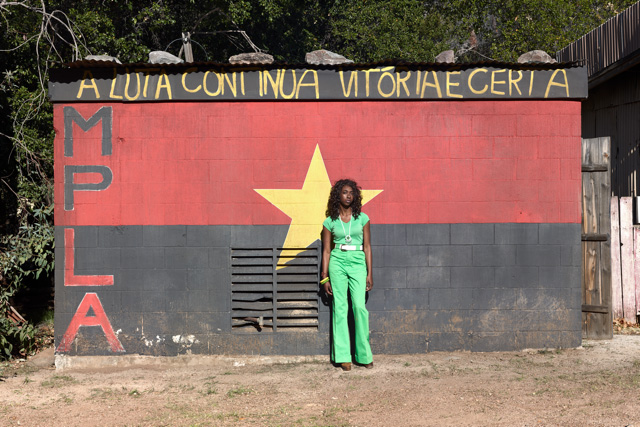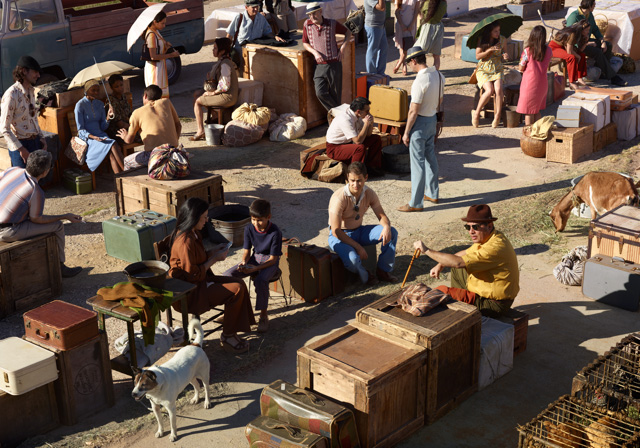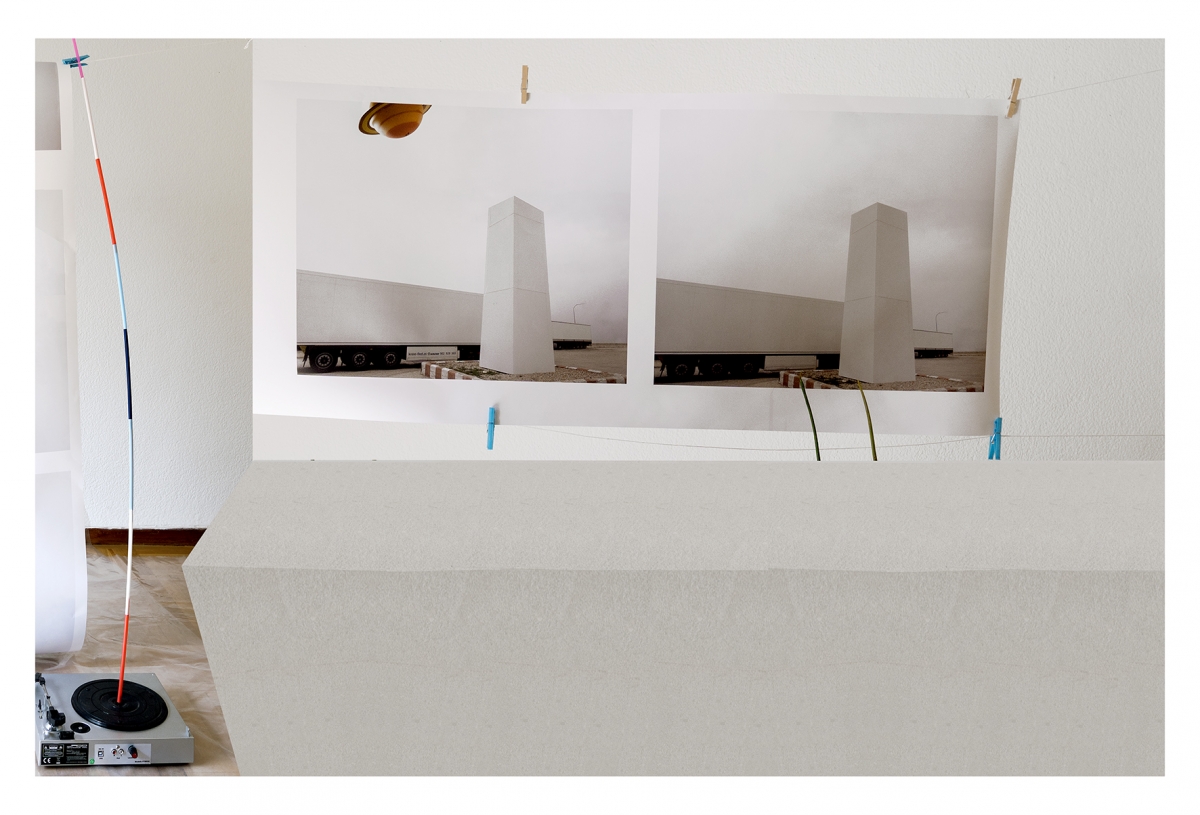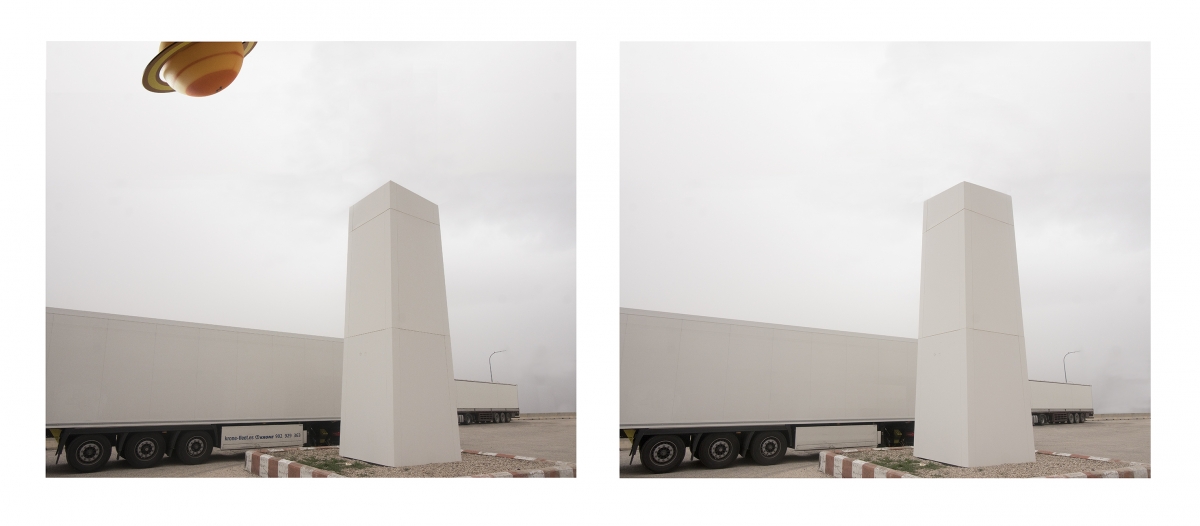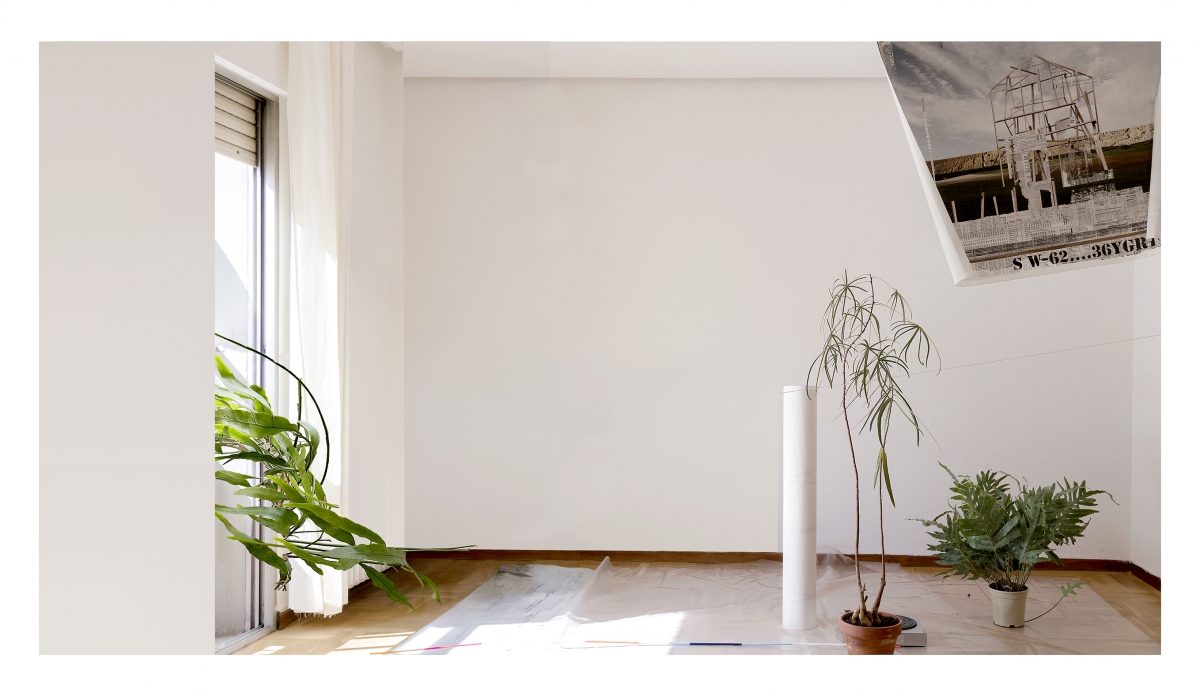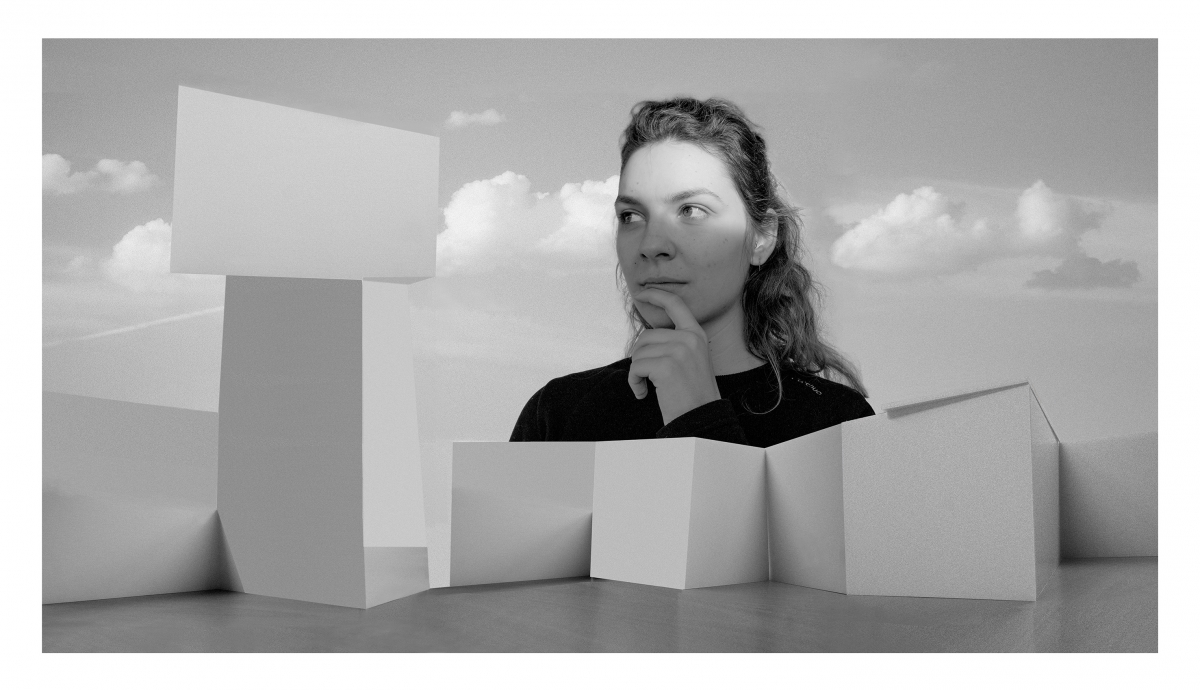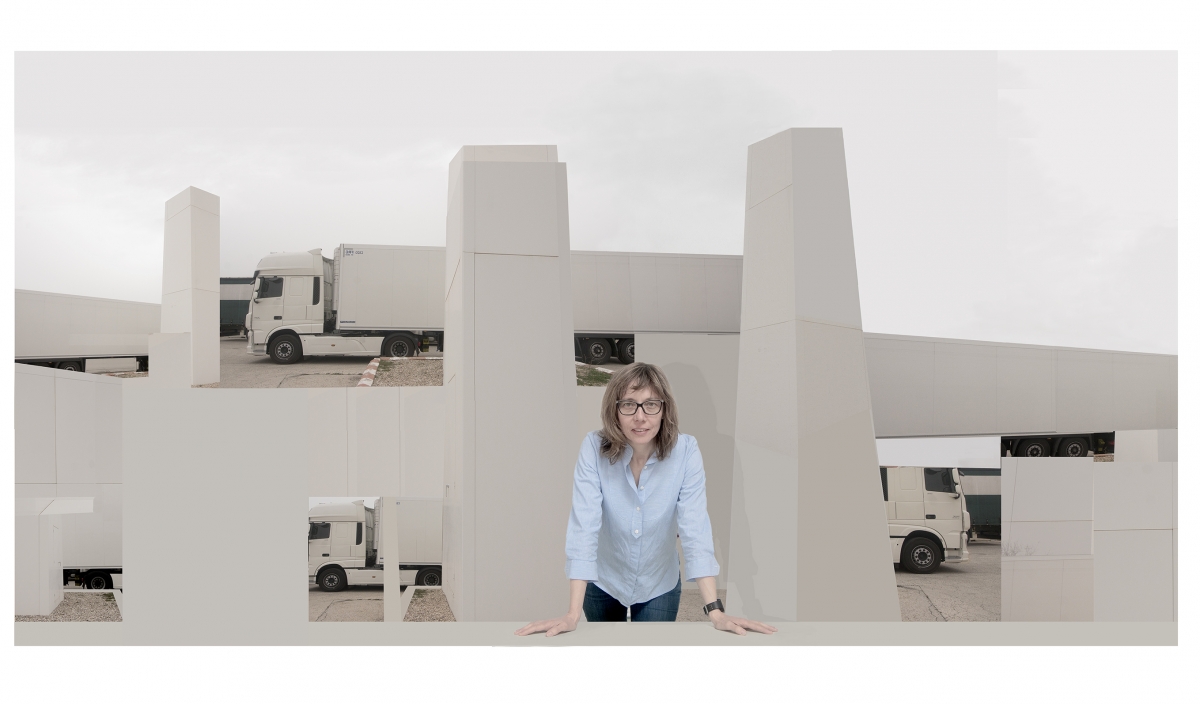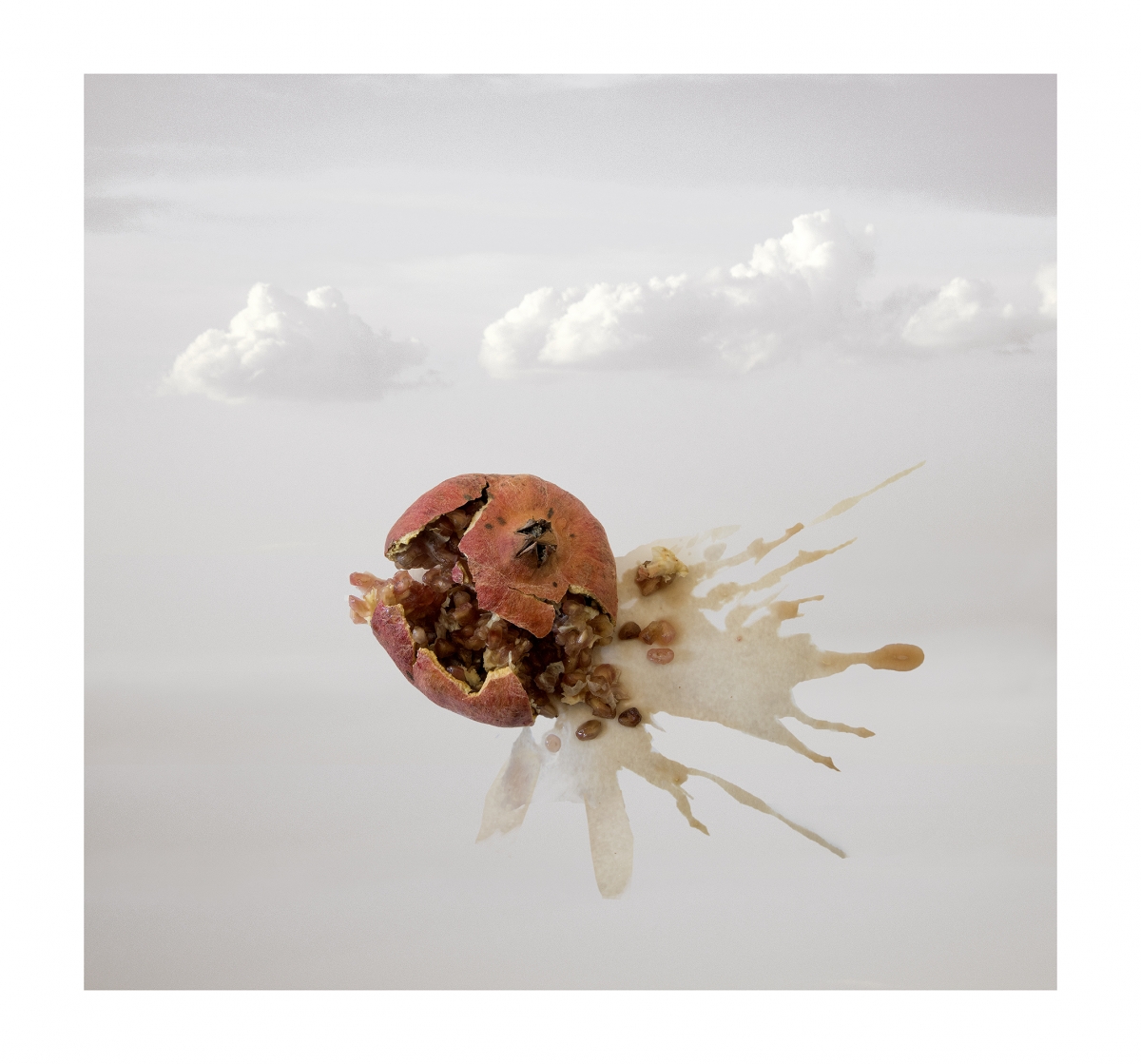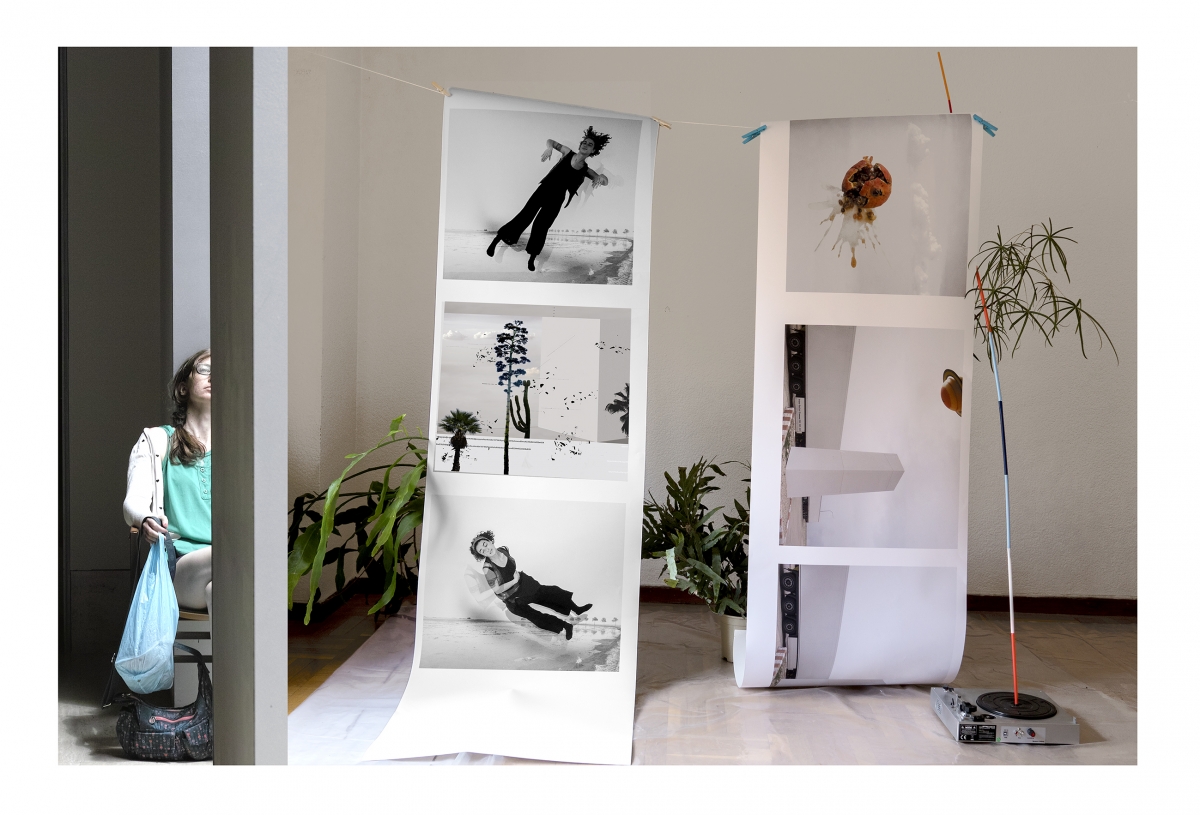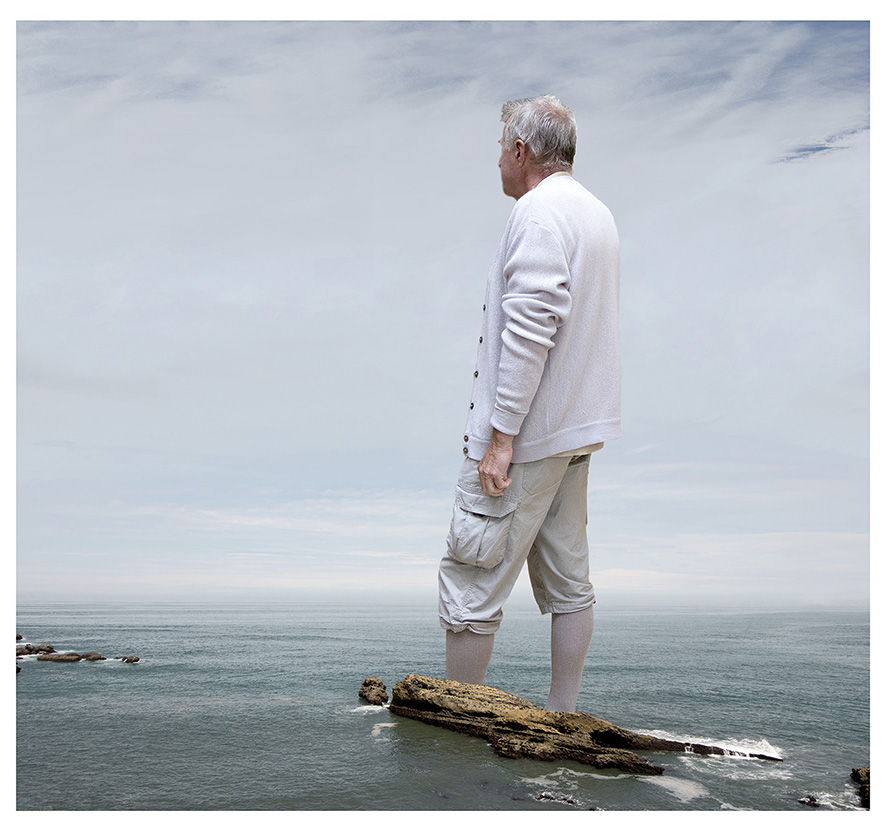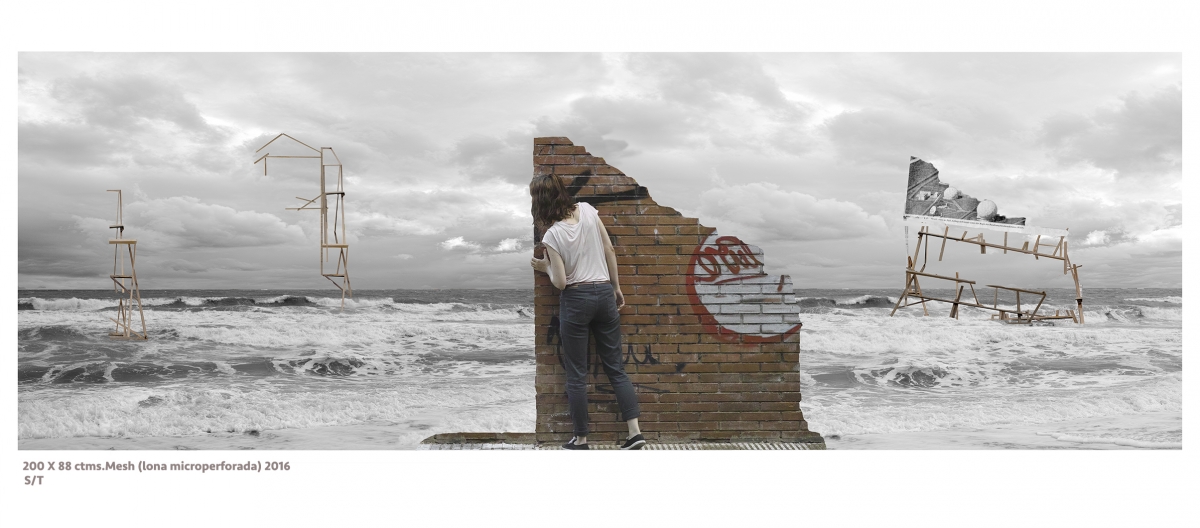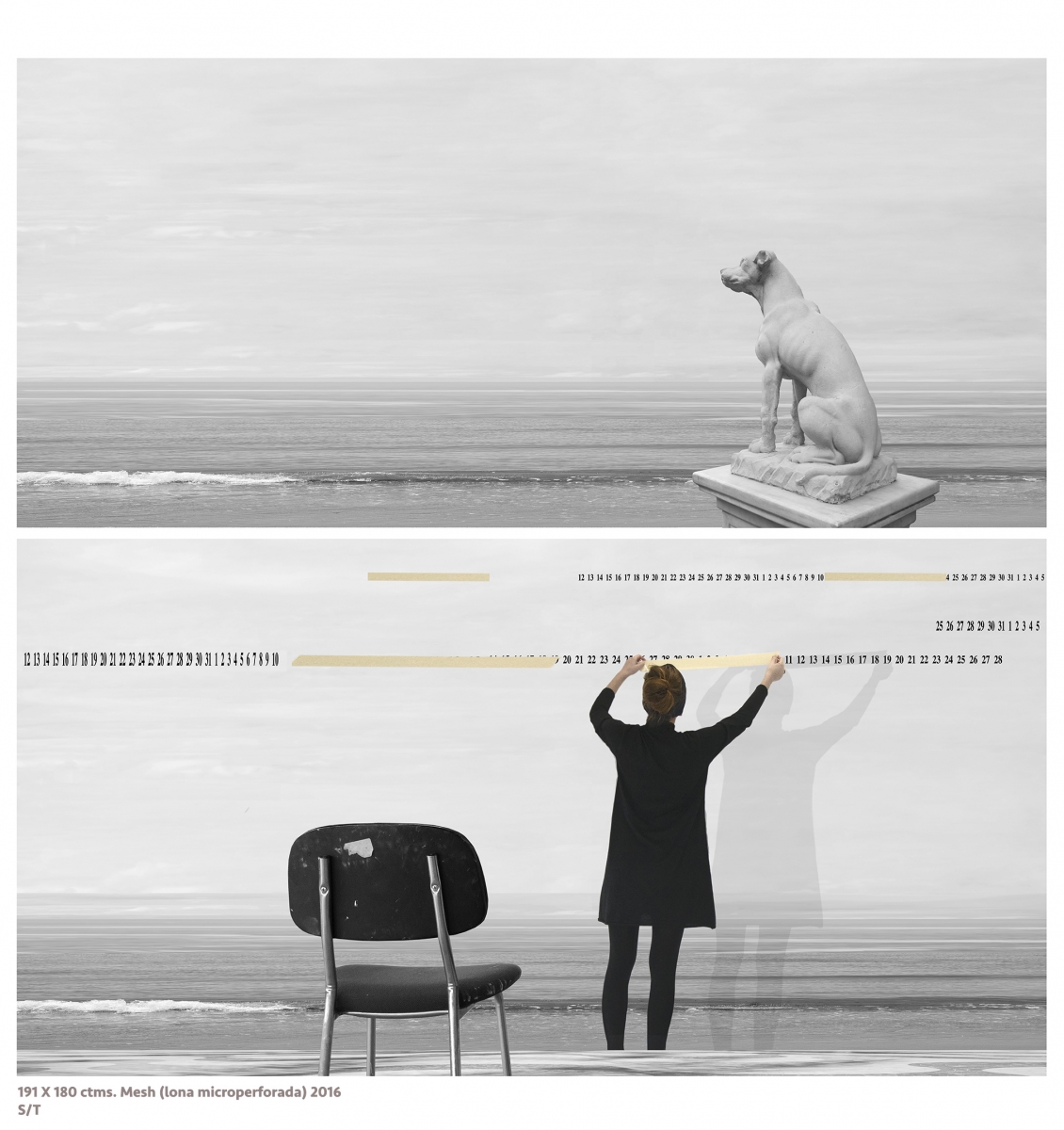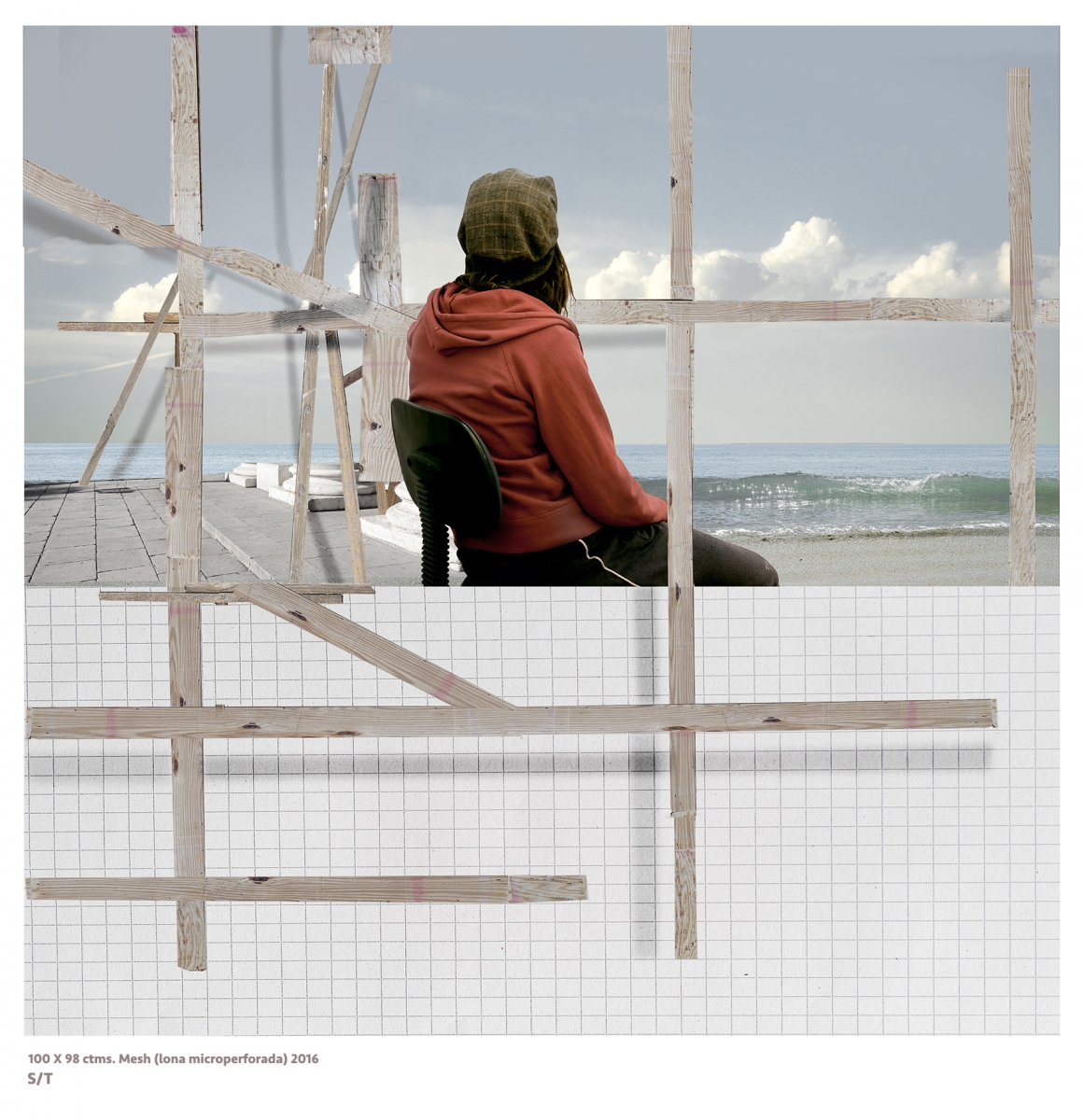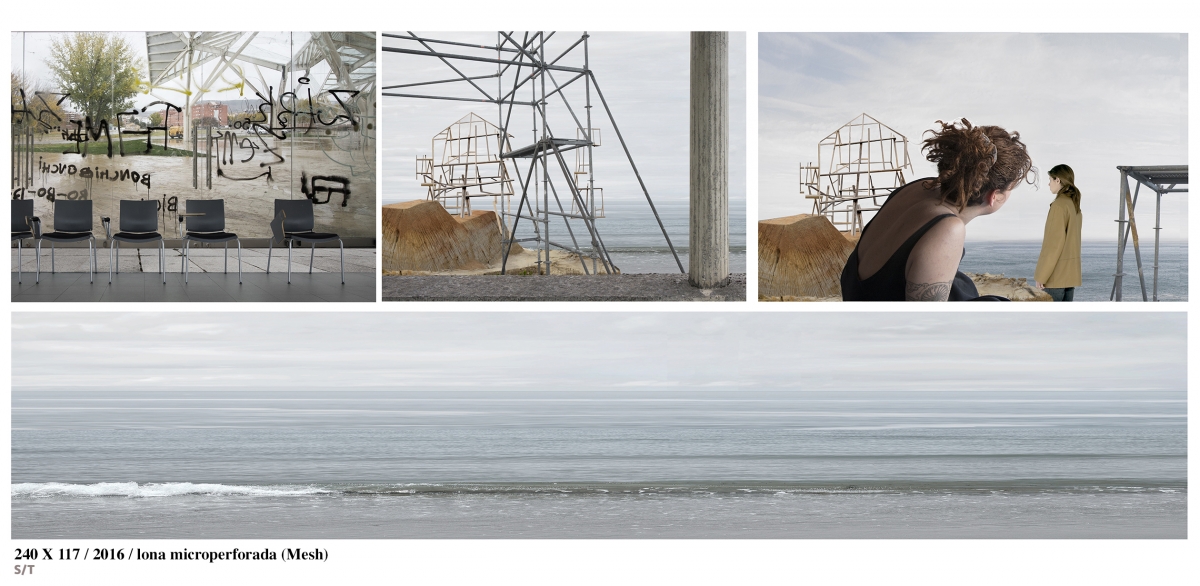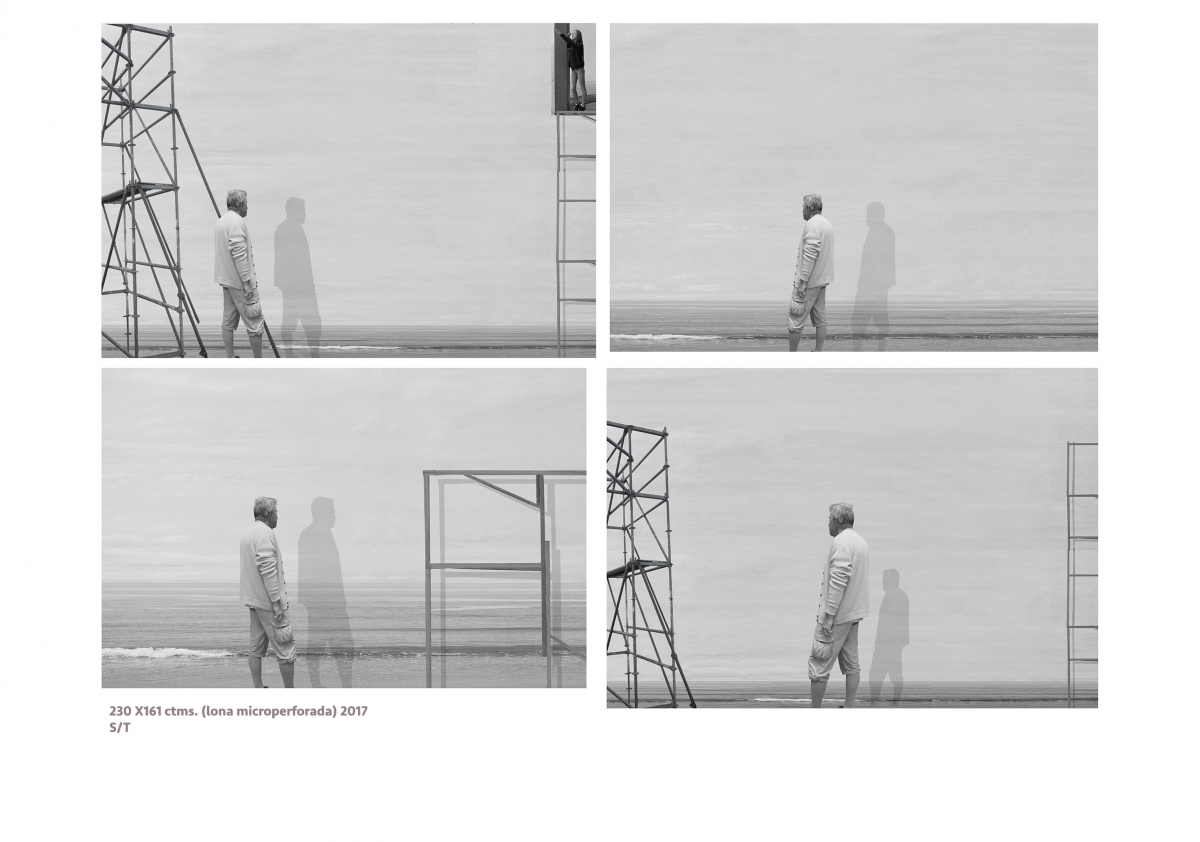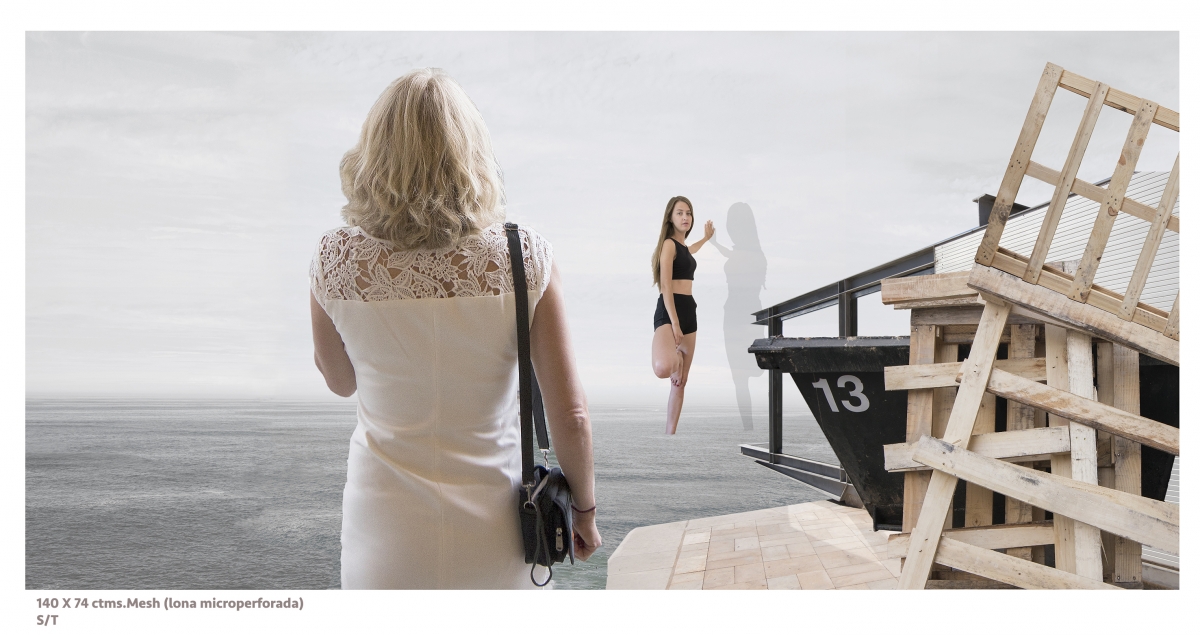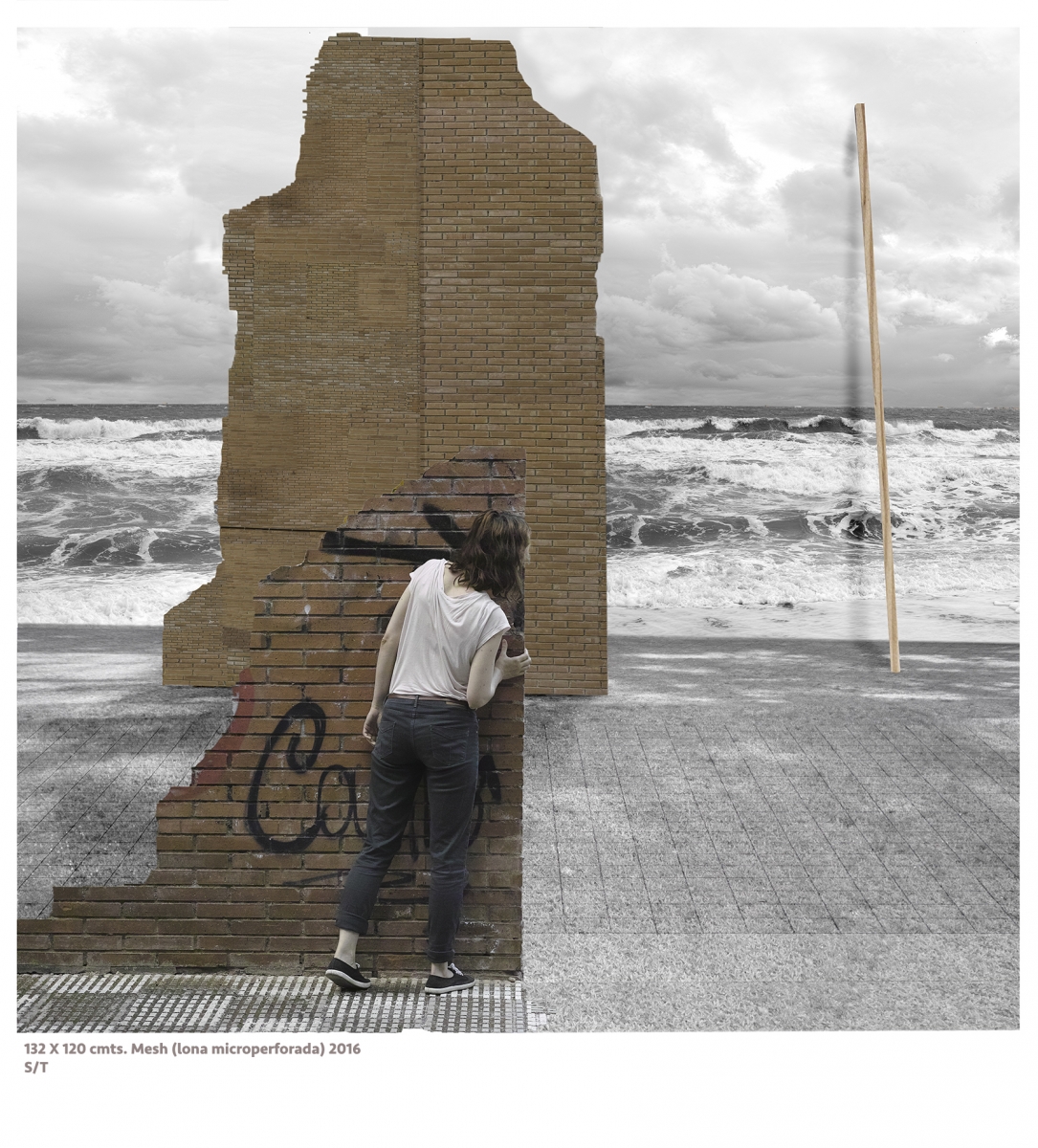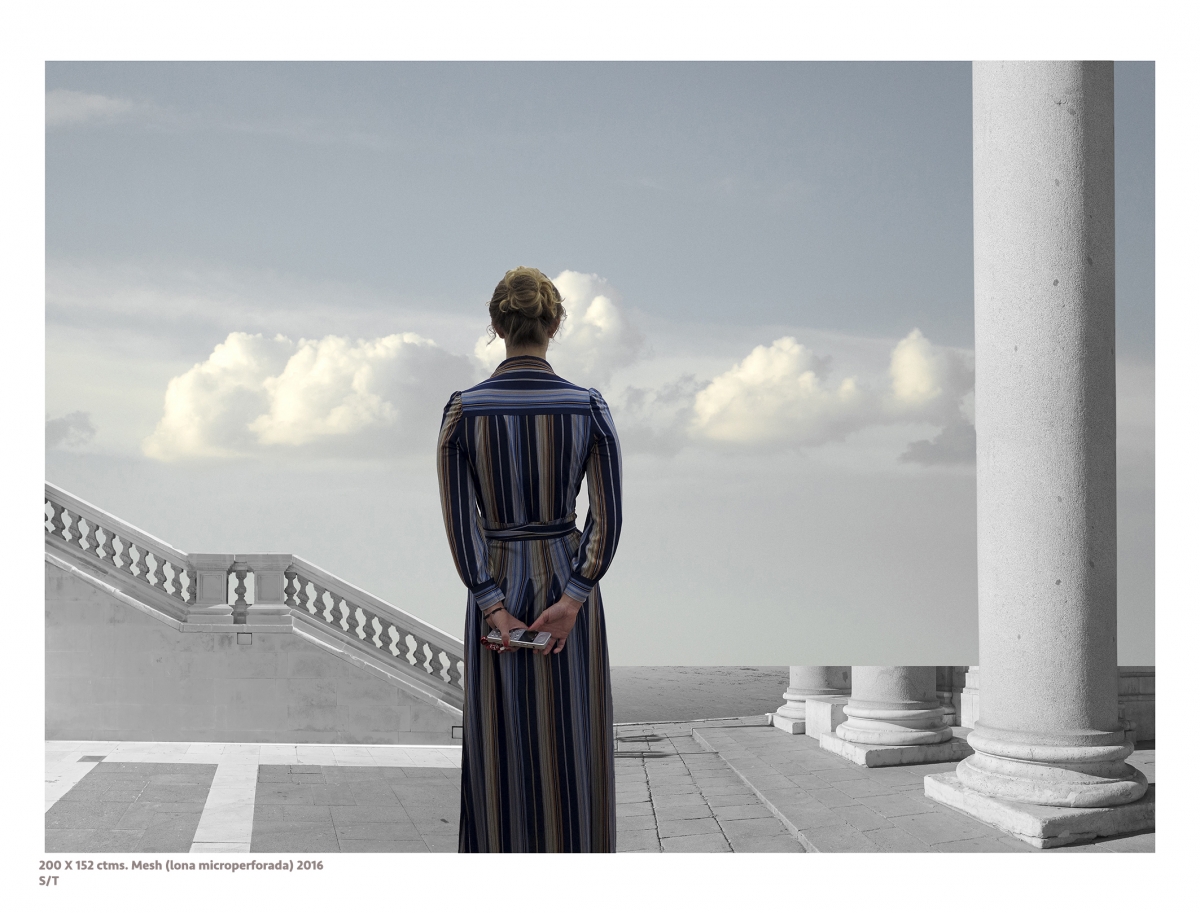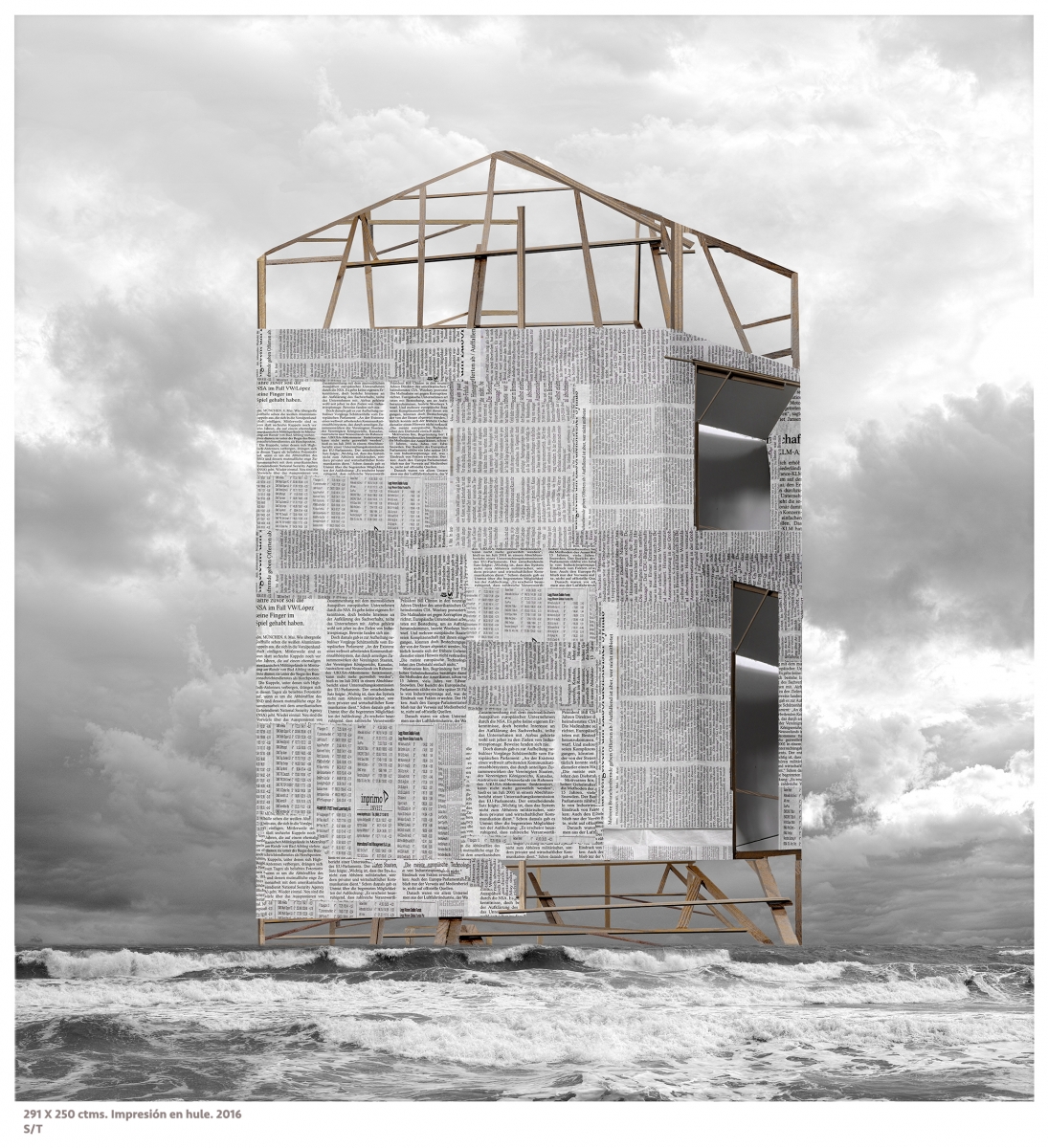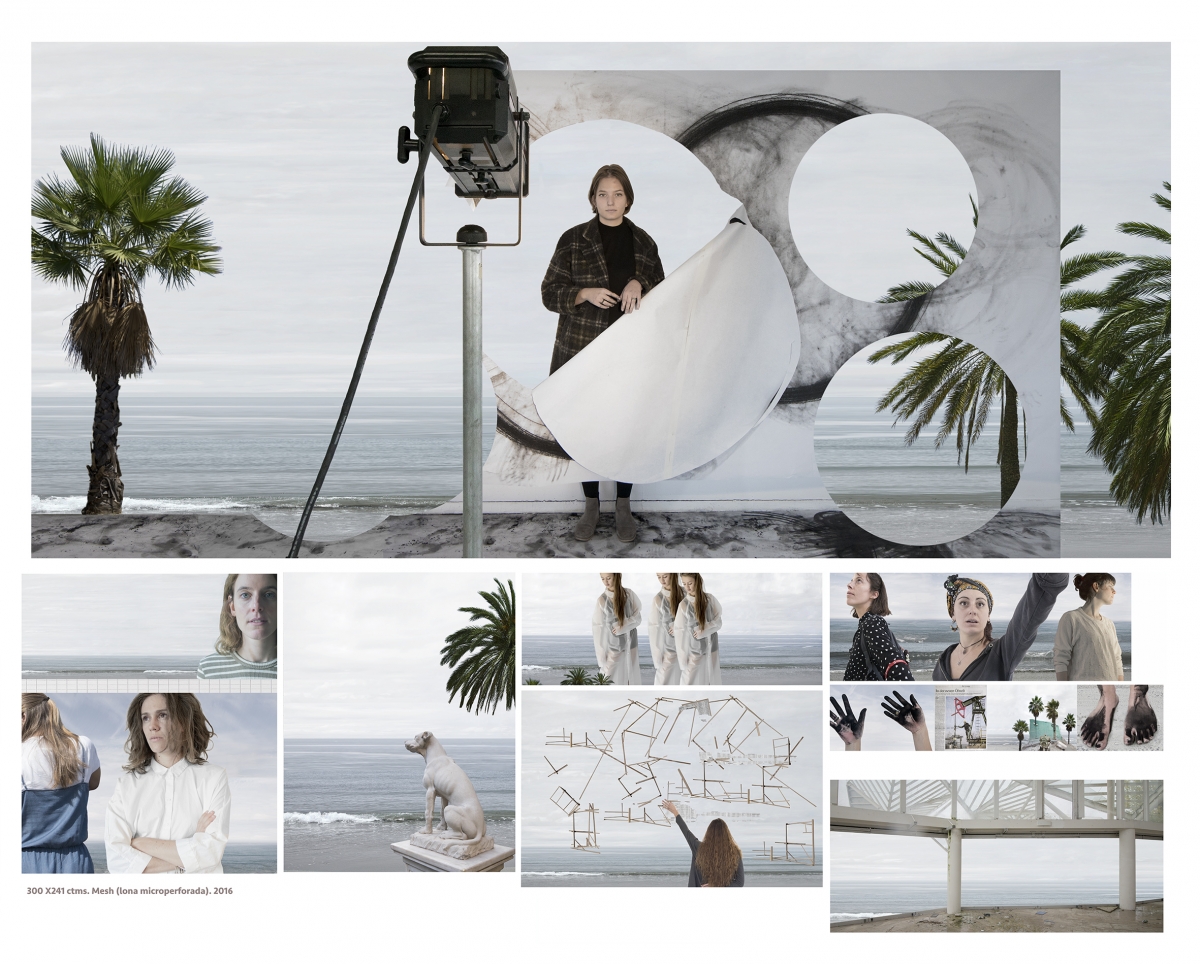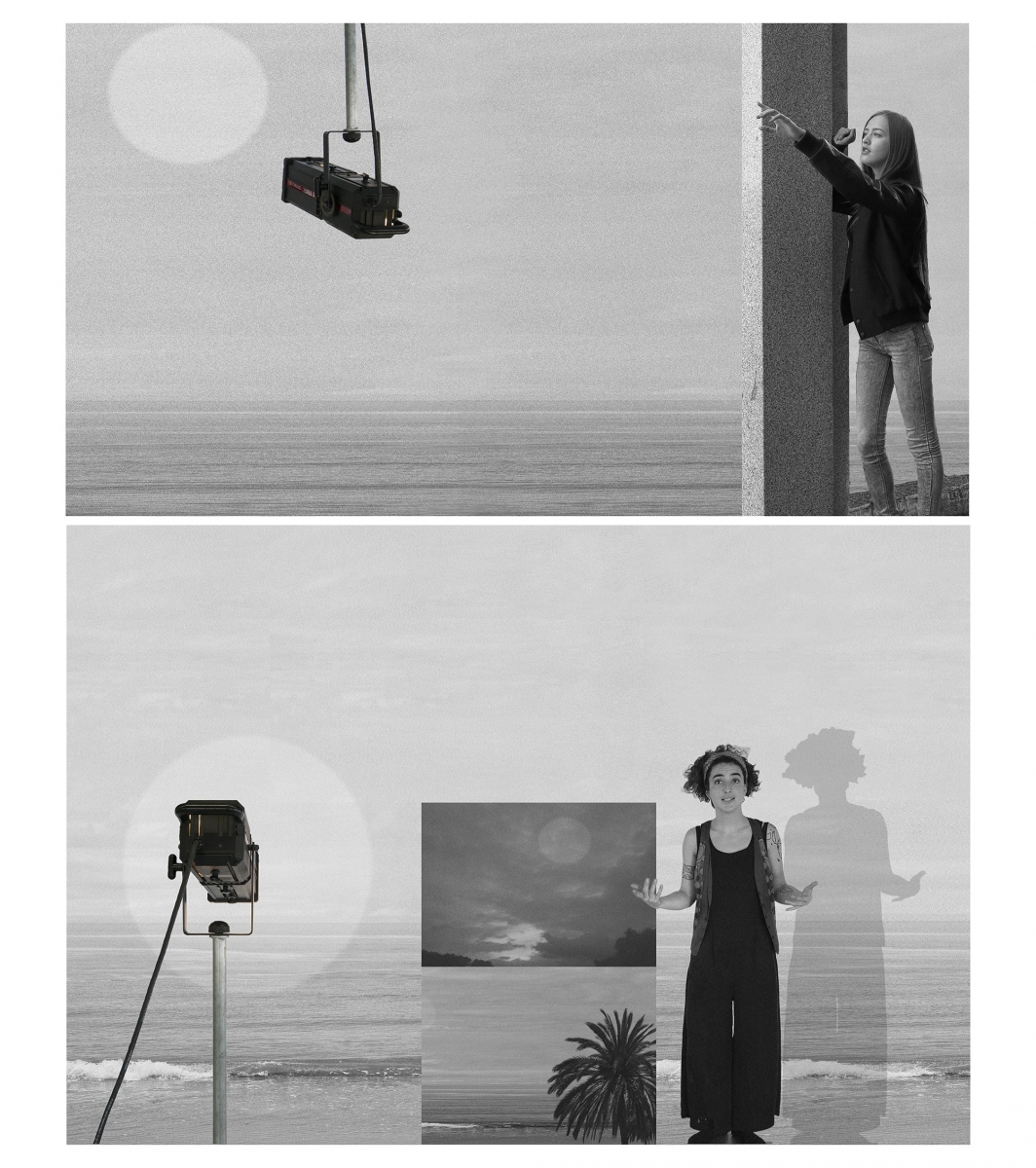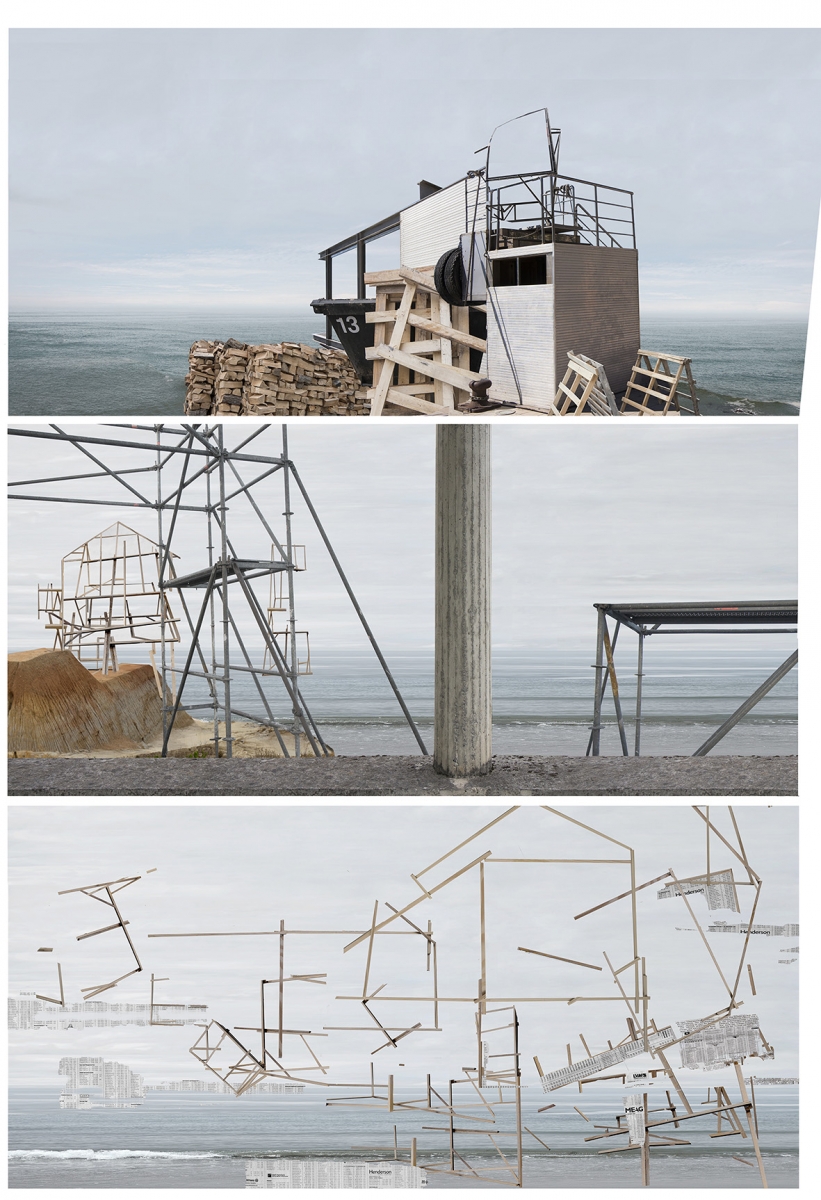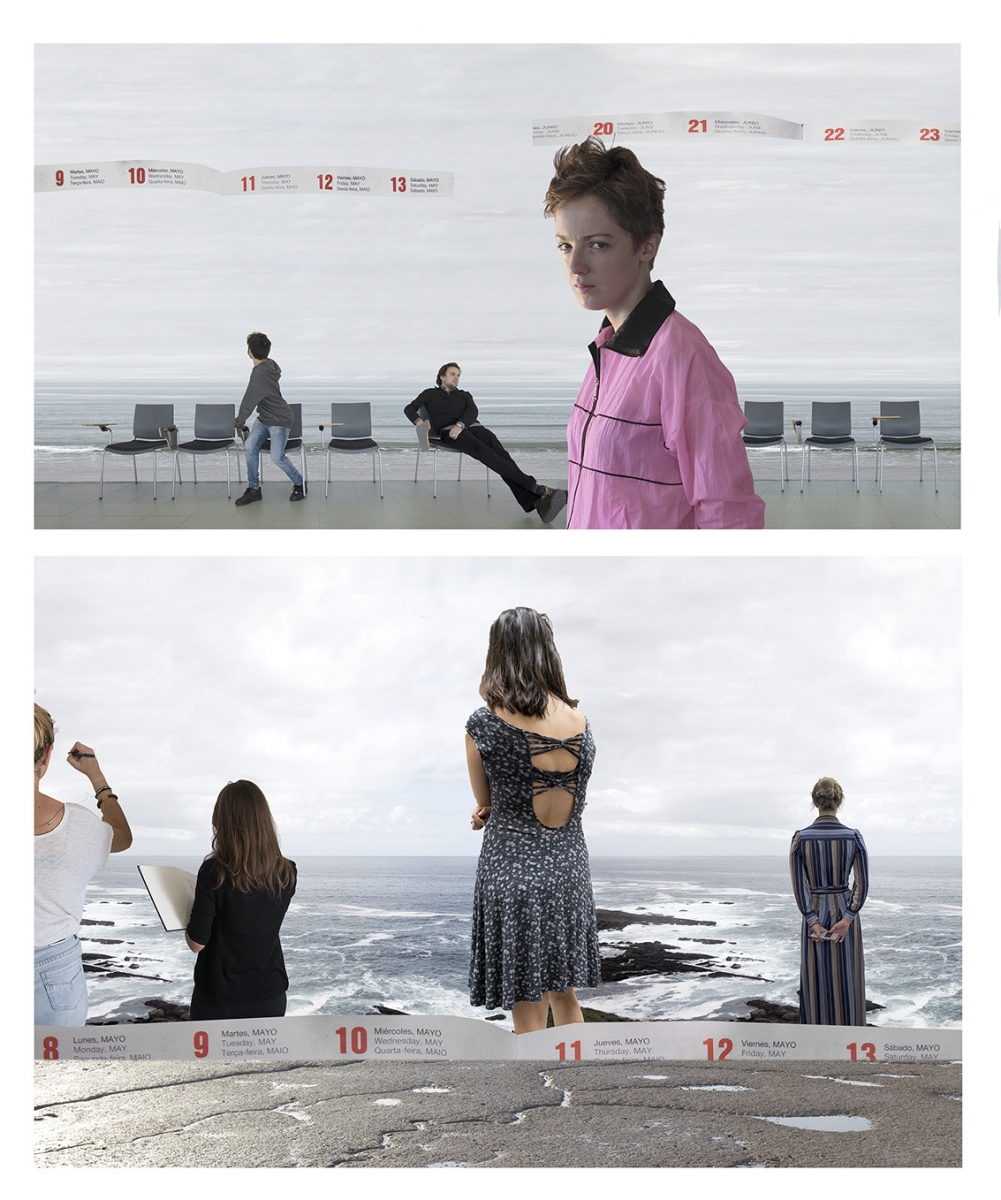Enric Mira
IMMOBILITY VS. MOBILITY
The distinction between movement and immobility has always been linked to opposition between fixed and moving images, two categories whose respective epitomes, in the domain of technical images, have been represented by photography and cinema. This lucky double paradigm of movement / immobility has served as a back up to a structural vision of the relations between both media, tending to emphasize the differences before the connections, putting into play the polarization of two models of temporality. Peter Wollen (2007) gave expression to this antagonism using the figures of fire and ice. The incessant movement of cinema, its constant flickering of lights and shadows, is like the flames in the fireplace; while the immobility of photography is like the cryogenics that preserve frozen objects keeping them from deteriorating. If the cinematographic movement gives the image a presence associated with the present, with the “flow of life” that Siegfried Kracuaer (1990: 102-103) would speak about, the photographic moment stopped in time, in its immobility, would not testify to the certainty of a past – already absent – but, as masterfully revealed by Roland Barthes (1996: 115 ff.), it would carry with it the spectre of death. Or, to put it in the words of film critic and theorist André Bazin, if photography is an attempt to “embalm” time and “separate it from its own corruption”, cinema, on the other hand, is not “limited to keeping the detained object to ourselves for a moment” like the fossilized body of an insect in amber, but to freeing art from its “convulsive catalepsy” (Bazin, 2001: 28-29).
These radical differences in the temporal articulation of each medium have brought with them a whole set of imbricated consequences, with their respective ways of representing reality and structuring their narrative dimensions. The imperative of modernity to limit the specificity of artistic media was what has driven the need to recognize the defining aesthetic-artistic characteristics of the identities of cinema and photography. And although the two share the same technological – and ontological – basis as recording devices of reality, as assumed by Kracauer and Bazin in their ideas about cinematographic realism, this has not been an obstacle for them to have tended to prioritize from a certain theoretical perspective, the moving and narrative quality of cinema over the static and silent persistence of photography, whose intellectual counterpoint, for the rest, was emblematically represented by Barthes. Having said that, however, we must rush to point out that it is no less true that an orthodox contrast between cinema and photography is soon relativized when looking at the history of relations between both media, especially in the domain of art, and it is verified how this attempt of splitting collides with a whole series of mutual contaminations that took place throughout the past century until the most immediate present of the digital age. Curiously, while cinema and photography in their origins as new media, took great care to mark their specificity with respect to old media such as theatre and painting that could count as their non-mechanical predecessors, in the period of the historical vanguards, they were, on the other hand, quite flexible when it came to defining strict differences between them.
From the premises that we quoted at the beginning of this text, Wollen concluded, not without a certain irony, “fire will melt the ice, and then the melted ice will extinguish the fire” (Wollen, 2007: 110). For the English theorist, this interaction between photography and cinema exposes the complex relationship of both media with time and its paradoxical involvement with the concepts of movement and immobility. Photography being essentially static represents and means an event whose time oscillates between the snapshot and the duration (De Duve: 2013); whereas in cinema, on the contrary, the filmic movement is the result of an immobile element, the photogram. However, at the present moment with the domination of digital images, the paradox between mobility and immobility seems to dissolve as both media merge and become a process of growing dematerialization of the image, both because of the loss of objectivity of those same images converted into mere data files, as much as their increasingly thin ontological relationship with the target world. On a horizon in which the images of synthesis will end up conforming by themselves to what we virtually identify as reality, the corollary of Wollen acquires a new meaning. There will be no more ice or fire and what will remain is liquid water, intrinsically malleable fluid. From the digression between fixed and moving images we have moved to a point of (con) fusion of both categories of images, without an effective distinction in terms of the production of their respective modes of temporality. Nowadays the notions of photography and cinema are still part of our visual and thought schemes but are probably condemned to obsolescence, at least in the way we have known and used them throughout the 20th century. It is probable that, sooner or later, the split between immobility and mobility will end up weakening as a typological criterion for the arrangement of images, due to the effect of a technology in which fixed and moving images tend to converge, both under the conditions in which they are produced and visualized and -if the case is manipulated- in the terms in which they are distributed and perceived. The material differences between both types of images seem, then, to dissolve within the framework of a post-photographic and post-cinematographic digital culture, where our experience of space and time is being profoundly altered. Although we could also think that if the history of their relationships has been plagued by interactions and if not for this, the ontological gap between movement and immobility has disappeared, maybe it is because such a distinction is still essential in our epistemological scheme. As David Campany suggests, “neither [cinema nor photography] has fundamentally changed since its invention, but this has not prevented them from changing in all other aspects” (Campany, 2008: 147).
Therefore, if mobility and immobility are the terms that delimit, at least as points of departure and arrival, the structural framework for the study of the relationship between cinema and photography, we must consider to what extent this duality corresponds to the strict division of the media and their types of images. How has it been altered by its historical achievements? Can it be theoretically surpassed by means of other conceptual articulations and does its emergence coincide with or precede the appearance of the cinematographic medium? We will start with this last question.
GENEALOGY OF THE MOVEMENT / IMMOBILITY OPPOSITION.
In the public presentation of the cinematograph made by Auguste and Louis Lumière in 1895, the first thing that the attendees saw was a fixed photograph on the screen which suddenly entered in motion a few moments later when the projector’s handle began to turn. This simple and almost anecdotal fact reveals the paradoxical identity of the cinema, bringing the motionless photogram together with the illusion of movement arising from its mechanical chaining. Immobility and movement coexisting simultaneously as constituent elements of the cinematographic medium and keeping an internal order: first one presents itself, it is realized; then the other appears, it emerges. Perhaps for this reason, in certain moments cinema has been seen as the result of a linear conjunction of photography plus movement, interpreting the historical anteriority of the photographic invention as a causal priority in the appearance of the cinematographic invention. They are, without a doubt, visions that can be too simplified and that require a critical review. The best genealogical vision of the historical link between both media and how the structural issues of immobility and movement come into play in the conception of images, are offered by the studies on chronophotography that emerged in the late nineteenth century from the hand of Eadweard Muybridge and Étienne-Jules Marey.
The chronophotographs consisted of series of photographic snapshots that recorded the fleeting movements of animal and human locomotion, exposing actions and gestures that escaped the natural perception of the human eye. Those of Muybridge were formed by a sequence of snapshots obtained by a battery of cameras arranged in line for the capture of the movement; those of Marey, made with the photographic shotgun of his invention, reflected the consecutive exhibitions of a movement superimposed on a single image. Movement, a phenomenon based on continuity, had been broken down – and therefore analysed – in a succession of frozen moments. A scientific interest, fundamentally related to anatomy and physiology, supported much of the chronophotographic research. Thanks to the technical advances in the photosensitive emulsions and the shutter mechanism of the camera, the photographic exposure was reduced to a minimum fraction of time and the photograph reached its full realization as a snapshot. At the same time, in this era dominated by the idea of progress and fascinated by the speed of modern life, chronophotography was not alien to a whole set of social practices of popular entertainment, related to the experience of movement, which arose with the invention of optical devices such as praxinoscope or zootrope.[1]Meanwhile, the art world was shocked and driven to a crisis in the pictorial representation of bodies in motion, attempting to conceptually assimilate the objective “scientific truth” of chronophotography with the “artistic truth” expressed by painting (Gombrich, 1987; Musser, 2005).
First, chronophotography had brought the decomposition of movement in snapshots, then, the Lumière brothers’ cinematograph reconstructed it as a moving image precisely from the motionless fragments of the frames.[2]However, this evident proximity between chronophotography and the cinematograph through sharing a photographic affiliation, the interconnection between the continuum of snapshots of chronophotography with the cinema, has been evaluated in different ways. Campany (2008: 24), for example, has highlighted the incompatibility of ideas about the truth of images and the notions of time and movement which each of these devices displays in order to put the emphasis on representation issues as a strategy to understand the relationships between movement and immobility. The French theorist Alain Jaubert, meanwhile, pointed out the need not to focus exclusively on the analysis of relationships around the mobile / static criterion and to put the genealogical emphasis on a specific documentary form of photography which, less subject to the plastic laws of painting, arises in the mid-nineteenth century from the hand of photographer Felice Beato who conceived the photographic document as a sequence of images following the structure of beginning, action and outcome that not only imprints a narrative character but also a certain sense of movement on photographic images.[3]
Without discarding the interest of these theoretical proposals we want to insist on the ineluctable fact that the photographic image, as a snapshot produced as part of a series of regular intervals, is the result of the decomposition of movement in chronophotography and also the element – as a frame – for its synthesis in the cinema. If Deleuze already pointed out that “the cinema constitutes the system that reproduces movement (…) based on equidistant instants chosen in such a way as to give an impression of continuity” (1984: 18), later approaches such as that of Mary Ann Doane (2006) have refined this relationship to unravel a complex relationship that continues to echo Zeno’s paradoxes and Bergsonian reflections on time and movement. For the North American researcher, the temporal continuity of the cinema hides a lost time or a zone of darkness, represented by the intervals between the snapshots of the frames, which must be kept invisible – unknown – as a necessary condition for the cinematographic movement to emerge. In this way, by hiding its own dependence on the immobile image, the cinema only assumes that the immobility of the photographic image acts as a condition of possibility, both technically and conceptually, of the filmic illusion of movement (Doane, 2010: 64 ).[4]Although the technical principles of the snapshot remain intact in the cinema -photogram- and in photography, it is true that the meaning of the snapshot as a static unit is not the same: in the cinema it is inserted in a context whose discursive purpose is absent in the other.[5]All this indicates that it is in the chronophotographic phase of the image when the paradigmatic opposition between immobility and movement begins to consolidate, and therefore the mediated instances of cinema and photography, which will articulate the visual culture of the 20th century. An opposition that will take place primarily in terms of complementarity and not so much exclusion, so that a productive play of tensions and interdependencies will emerge from the polarity between immobility and movement, especially significant in the domain of artistic practices.[6]
THE NARRATIVE EXPANSION OF PHOTOGRAPHY
The relationships between cinema and photography in the context of art have been complex and not without tensions, as the technical and aesthetic qualities of one have been coveted and adopted by the other, in a mixture of codes that has even transcended the strict medial duality involving video, painting and performing arts. Therefore, as pointed out by Philippe Dubois, the analysis of these relationships is required to be oblique and transversal, “imagining one enlightened by the other, one through the other, in the other, by the other or as the other” (1995: 152). Only in this way will it be possible to understand that the meeting truly takes place when film and photography reflect by their own means but without renouncing the use of the other, that is, without their specificity becoming a constraint that limits them. Through the incorporation of resources such as montage or series, photography has deepened its temporal dimension; with the explicit integration of the photogram and filmed photography, cinema has turned immobility into an aesthetic motif in the form of reflection. Experimental strategies which, in our opinion, do not disperse the identities of both media but, on the contrary, help to deepen the understanding of the narrative nature of photography and the photographic nature of cinema.
According to an idea firmly rooted in our iconic culture, photography suffers from an inherent narrative deficiency, a fact that stands out in a special way when related to cinema. In general, as John Szarkowski sets out in the exhibition in The Photographer’s Eye (1964: 42), it is considered that the stopping of time inherent in the photographic snapshot makes it impossible to adequately capture the temporal flow and, therefore, institute a story, a narrative while the image drifts towards the symbolic. In other words, photography, constrained by its referential quality as a fragment without temporal thickness, would block any possibility of generating a fictional effect and thus creating a narrative meaning for the images. This is an idea that, as we will now show, has been radically questioned by reviewing, at times, the reductionist model of temporality as an instant associated with photography, and at other times, highlighting the importance of the processes used by the viewer to read the images (Baetens , Streitberger, & Van Gelder, 2010).
During the period of the historical avant-gardes, and especially in the Soviet constructivism of the 1920s with figures such as Dziga Vertov, El Lissitzky, Varvara Stepanova and Alexander Rodchencko, photography and film began to share montage as an aesthetic principle equally applicable to still and moving images[7]. The taking, photographic or cinematographic, was interpreted not only as a dynamic framing on the reality -angulations, picados, close-ups … -but fundamentally as a fragment, a partial taking, a choice among other possible ones -not definitive or final because they were possible successive shots or records of the same subject – which required its assembly with other images to structure a visual message, either by ordering the frames within the film sequence or in the arrangement of the photographs on the printed page. The question for these artists was not the description of the movement, but the construction of an internal movement that would energise the issue of representation and also mobilize the audience. With constructivism, Campany points out, “the still photos began to look like filmic stills, while the films were almost constructed from still photographic shots” (2008: 31).
The idea of montage expanded among the avant-garde in many ways. The sequences, the series, the double impressions, the multiple expositions, the photo collages, the photomontages or the juxtapositions formed a whole repertoire translating the basic principles of montage, and at the same time propping up the narrative dimension of photography based on their relationship with the cinema. Procedures that supposed a radical difference to the belief that the potential of photography resides in its singularity as an individual image, whose epitome would later represent the poetics of the decisive instant enunciated by Cartier-Bresson in the fifties.
It is relevant to highlight how in this historical moment the printed page became a fertile medium to explore the interactions between cinema and photography. On the one hand, cinema, as a moving image, inspired the adoption of sequential structures that energised the layout of magazines and books where the image prevailed over the text making use of the alienation of bursts of snapshots, of the arrangement of photographic strips horizontally or vertically on the axes of the page, as well as the superposition and contrast of images. From the beginning of the 20th century, newspapers, illustrated magazines and advertising incorporated these visual design procedures as a communicative strategy for their contents. The book “Photo-auge / oeil et photo / photo-eye” (1929) by Franz Roh and Jan Tschichold, published as “Film und Foto” catalog,[8]the first exhibition that brought together film and photography in an artistic setting, would count as an example of the implementation of these strategies in the photographic edition. This overcoming of the individual image character of photography through the articulation of images on the printed page of the book will run through the 20th century, constituting one of the most solid forms of modern photographic expression and its narrative structure. Metal (1928) by Germaine Krull, Antlitz der zeit (1929) by August Sander, Die Welt ist schön (1929) by Albert Renger-Patsch, The English at Home (1936) by Bill Brandt or American Photographs (1938) by Walker Evans would suffice as a bouquet of excellent examples, promising another kind of truth: “a truth only available in the interstices between the images, in the movement from one image to the next”.[9]
In a parallel way, in these interwar years, another procedure emerged which consisted of the extraction of filmic frames for their reproduction as photographs in books and magazines. This step from the continuous flow of projection to the stability of printing on paper in magazines served, in the case of avant-garde cinema, for the popular recognition of this innovative form of cinematographic expression. But the most relevant products of this convergence of media were the books which explicitly expressed the attempt to set the still images extracted from the films in motion by means of graphic and layout procedures, playing with the sequentiality of the succession of the sheets, and with the simultaneity imposed by the frame of each page, in an apparent betrayal of filmic specificity. Books as unique as Yaponskoie kino (1928) by El Lissitzsky, Le Cinéma in USSR (1936) by Alexander Rodchencko and Varvara Stepanova or Filmgegner von heut. Filmfreunde von morgen (1929) by Hans Richter which also appeared as a result of Film und Foto show an entire arc of possibilities of this other visual regime, opening with the page printed as “meta-media”, as a kind of “machinery” which with its own resources “sets in motion” the still images (Albera, 2007; Frizot). Not surprisingly, some time later, Moholy-Nagy, director of the Institute of Design in Chicago at that time, insisted that the photographic series, in their sequential nature, are the logical culmination of photography as “vision in motion” (Moholy-Nagy, 2007: 83).
The second half of the 20th century witnessed the emergence of Pop Art, Minimal and Conceptual Art and with them the emergence of a series of new artistic approaches that went beyond the limits traditionally assigned to artistic disciplines. The idea of a formal specificity was diluted in a process of hybridization in which the new technical means and the traditional genres of painting, drawing and sculpture were interwoven, with photography playing a central role in the revision of the traditional concept of art. During the seventies, this medial hybridization triggered a dematerializing and performative effect in art: works, rather than being objects – of unique, permanent and auratic physical identity – were constituted for a specific spatial situation and a specific temporal duration, privileging the presence of the spectator as an integral factor in the realization of the work (Crimp, 2005). From this moment, the artistic installations working with photographic images acquire a great prominence. Dubois has studied the consequences of this procedure for photography, analysing the transformation in the ways of capturing time and space through this type of work in order to verify how the unitary and closed rectangle of the simple photographic image is overcome by a reorganization of vision. In the opinion of the Belgian theorist, it is a fundamental evolution in photography, coming from the influence of cinema, “as a transposition of this extension of the world’s perception by the image that cinema has imposed” (Dubois, 2001: 140). From photography as a capturing of a fragment enclosed space, temporarily to a pulsation of its overflow that would insert a cinematographic effect in photography. On the one hand, the use of resources, introduced in the 1950s by William Klein and Robert Frank, such as the blur, the moving or vibrating images are a photographic attempt to capture the movements of time, the temporal thickness not of the cinematographic illusion but of the “inner movement … the implicit tremor that secretly shakes everything” (Dubois, 2001: 141). On the other hand, the use of the panoramic format and large-scale images are also a sign of this desire to overcome the limitation of the photographic frame-cut, to open a kind of sweeping or extended view (Dubois, 2001: 141).
Along with these enunciative strategies, the artistic discourse of photography has also been linked to critical approaches to representation, particularly through fragmentation, appropriation and montage. Resources that, as we have seen, had already been put into play by the historical avant-garde but with the emergence of digital technology at the end of the twentieth century acquire a new deconstructive and narrative dimension. The entity of the photographs is to be essentially fragments, cuts of space and time usurped to the continuum of the real, and computer technologies allow the assembly or rearrangement of these heterogeneous fragments by an imperceptible suture. If the avant-garde photomontage was indebted to the collage and its price of rough stitching, digital photomontage, on the other hand, safeguards an appearance of organicity that is not free or aesthetic – the return to the order of an analogical realism – but that can have, as Walter Benjamin attributed to the “optical unconscious” of photography, a revealing and critical potential. Basically, it is no longer a question of “representing” reality but as José Luis Brea suggested, of “staging enunciative segments that cast doubt on the order of established representation”. By composing the different visual fragments in the visual realization of the photomontage, the computer device, according to Brea’s analysis, would act as “a second shutter” that does not freeze time but turns it into an “instant-becoming” which, through the reading of the image, gives rise to an internal “cinematization” of the image, slipping its meaning towards the cinematographic and the literary (Brea, 1996: 21).
We can affirm, in conclusion, that the narrative and cinematic dimension of photography emerges in the period of the historical avant-garde as a consequence of the conquest of the instantaneousness that photography provided and, at the same time, of the recognition of its limitations as a visual product asylee, and the insurmountable contradiction of the snapshot aspiring to represent movement at the cost of paralyzing it, through the articulation of series and sequences of images capable of capturing, thanks to a kind of expansion of their inner time, the temporal depth of life and nuances of its permanent transformation, always with the horizon of the cinema as a model. The artistic developments of the neo-avant-gardes of the last decades of the twentieth century have only deconstructed the idea of the instantaneity of photography as an aesthetic unit to give way to other photographic forms – from multimedia installations and photographic staging to the digital side of photography – photomontage- in which photographic images are elements of a group interacting with other media within different artistic and cultural contexts (Baetens, 2006, Guido & Olivier, 2012, Mah, 2010).
IMMOBILITY AND FILM NARRATIVE MOVEMENT.
The approach of a narrative time dominated by slowness arises in cinema from the fifties as a critical response to an environment increasingly dominated by the maelstrom of television culture and the Hollywood industry of entertainment and spectacles. If during the first decades of the 20th century the phenomenon of speed had inspired the vision of cinema and avant-garde photography, after the Second World War, the idea of an accelerated time loses credit as revulsive and slowness is imposed as a new “radical” strategy of artistic reflection that will not stop developing since then (Campany, 2007b, Font, 2001). Filmmakers such as Vittorio De Sica, Roberto Rossellini, Ingmar Bergman, Michelangelo Antonioni, Pier Paolo Passolini, Andrei Tarkovsky, Wim Wenders, Agnés Warda or Krzystof Kieslowski can be cited, among many others, within this contemplative film approach. It was a way of making films in which the slowing of the narrative tempo served to open a space for philosophical and aesthetic reflection within the same film (Campany, 2008: 37). For his part, Raymond Bellour has suggested that this type of cinema which associates the cinematic movement with its interruption or slowdown would constitute a “second film history” still unattended, that would go back to the beginning of the 20th century with the figure of D.W. Griffith and that would make it to the present day with the turn towards “the photographic” from filmmakers such as Jean-Luc Gordard or the most recent Wong Kar-Wai as part of the previously mentioned list (Bellour, 2008).[10]
In the sixties and seventies an experimental cinema emerged that also participated in an interest in immobility and slowness but this time mediated by a self-reflective vocation, of questioning the very functioning of cinema as a language and / or as a device for vision and perception, with paradigmatic examples like La Jetée (1962) by Chris Marker, Wavelength (1967) by Michel Snow or Nostalgia (1971) by Hollis Frampton.[11]Films in which the relationship between cinema and photography appears as something inextricable, where photographic images are inscribed with all their ambiguity, endowed with a dense depth and, at the same time, with an opaque and impenetrable superficiality. A fact that proves, as Mary Ann Doane has written, that cinema, despite having its own history, has turned to photography as a generator of “epistemological dilemmas” capable of contaminating the cinematographic narrative and temporal structure itself (Doane, 2010: 67).[12]In discussion with the Barthesian reflections on photography, Raymond Bellour was one of the first theorists to reflect on the capture of a film “through the spectrum of photography” and how to treat the photographic motionless by inserting frozen images, interruptions of motion or immobilized gestures to modify the meaning and thread of the story narrated (Bellour, 2010) and, above all, have the disturbing effect of detaching the viewer from the cinematographic fiction and its temporal flow making him a “thoughtful spectator” (Bellour, 2002).[13]
Roland Barthes never concealed his low esteem for the cinema and the narrative forms that subject the viewer to the irreversibility of the linear time vector, as opposed to his fascination with the immobility of photography that allows another mode of contemplation. While the cinematographic image is fleeting and takes us with it in its flight, the photographic one never lets itself be grabbed completely; while in the cinema “I am not free to close my eyes” subjected to the voracious continuity of an illusion of life, in photography I have to “close my eyes” and let the punctum arrive as an hallucination “to the affective consciousness” ( Barthes, 1990: 105 and 197); while the cinema imposes its time of reading, in photography this time is the prerogative of the spectator as a species, according to Wollen’s expression, of “time of free rewriting” (Wollen, 2007: 108). In short, for Barthes, photography is essentially “thoughtful” while cinema lacks that “thoughtfulness” (Barthes, 1990: 81 y 106).[14]It is not surprising that the author himself pointed out that cinema is, along with the visual arts, a means of “domestication” of photography, a resource for “tempering the insanity that constantly threatens to explode in the face of the beholder” (Barthes, 1990: 196-197), although this would leave the door open to reverse contamination by which, as suggested by Bellour, the stimulation of cinema by the photographic enables a more pensive film viewer than the one conceived by the French maestro.
In line with the irruption of the photographic immobility in cinema, the halting and the slowing down of the filmic movement, Mulvey has investigated the way in which the appearance of new technological devices such as video, DVD or digital edition in personal computers have completely reconfigured the nature of the viewer and the way of contemplating celluloid cinema. Thanks to the control that the viewer has over the viewing process of the films, he now has time to “stop, look and think”. If from its origins the magic of cinema has been identified with its ability to create the illusion of movement, in these moments, perversely and paradoxically, as the British theorist and filmmaker points out, the magic arises when the moving image is stopped and “the thoughtful viewer can discover in the celluloid image more than what can be seen at twenty-four frames per second”.[15]A new visibility of the constitutive immobility of the cinema and another reading of its narrative linearity are possible thanks to this new relationship arising between the new technological media and celluloid.[16]
Subsequently, Mulvey herself reviewed this idea from the psychoanalytic perspective in her article “Visual Pleasure and Narrative Cinema” (2001). According to this text, classic narrative film harbours an indissoluble paradox: while promoting film pleasure through a voyeuristic gaze, the feminine presence inherent to the narrative spectacle induces a fetishist gaze on the spectator.[17]This presence, in its erotic dimension, would act against the diegetic nature of this type of cinema by provoking moments of contemplation that would suppose a kind of freezing of the flow of action: the female image would emerge as “an intrusive, static, one-dimensional fetish” (Mulvey, 2001: 337). With the new technologies and their ability to stop the moments of appearance of the female figure, Mulvey now argues, the “fetishist scopophilia” of the spectator – the pleasure of the immobile fragment – is reinforced against the voyeurism that narrative cinema habitually induces, deepening that contradiction that had already been guessed as present in the same projection room. A reconfiguration of “the power relationship between the viewer, the camera and the screen” thus takes place, to the point that the compulsion to stop and repeat the desired images would lead the viewer – in a manifestation of sadism in Freudian terms – to “To commit an act of violence against the cohesion of the story, against its aesthetic unity and the vision of its creator”: to become a “possessive spectator”, a spectator who can dominate and possess previously elusive images (Mulvey 2006a). A spectator, however, who as a counter-effect can in turn, according to Burgin, become a “possessed spectator” insofar as those fragments subject to compulsion deeply captivate the viewer and can “usurp” their subjective singularity (Burgin, 2006).
DISSOLUTION OF THE PHOTOGRAPHIC IN THE CINEMATIC
In our journey we have been able to verify that the interesting thing in the analysis of the relations between cinema and photographs is to focus on that area that remains between film and photography, the interstices between the fixed and moving image. We have seen how the structural differences between the two media are relativized – though not abolished – by the historical analysis of these relationships and in particular by the contaminations produced by artistic practices from the historical avant-garde to digital technology, without forgetting the inflection introduced by the video device. The encounters between film and photography would thus define an important area of intersection, interdisciplinary, in which neither of the two media would be defined in itself but in relation to the other. In fact, on the one hand, we can affirm that the dividing line between photography and cinema does not coincide with the symmetrical opposition between immobility and movement. Both media constantly transfer it from the moment photography can be perceived as a legitimate factor in the reconstruction of the narrative movement – think about photomontages but also archives, photo albums or photo-novels – while the cinema, as it has just been shown, is an immeasurable repository of still images. On the other hand, in coherence with what we have just said, illusion of movement and narrative movement are not necessarily two coinciding elements, so we should not talk so much about two forms of time – the immobility of the snapshot versus the continuity of movement – but rather of two modulations of narrative time.
It is so difficult to imagine a “photogram resistant to a photographic reading” (Campany, 2008: 54) as nowadays, there is no photograph that “does not contain any trace of the photogram” (Woods, 1996). Even, as Wim Wenders suggests, in “the interior of each photograph is also the beginning of a story” and any of them can be “the first frame of a movie” (Wenders, 2001). A look at the current relations between cinema and photography must therefore address the issues of movement in relation to fixed images and, conversely, must insist on immobility in relation to moving images. If the birth of the cinema marked the point of digression between fixed and moving images, the present moment of production and electronic reproduction of the images propitiates a new convergence between both iconic systems from their same polarity.
When reviewing some contemporary artistic productions it is verified that the images on which they are based are of “photographic effect”. Nevertheless, the use that is made of photography is very far from its traditional meaning not only because it is technologically overcome but also, above all because it is aesthetically displaced towards other territories. For example, Jeff Wall conceives his photographs with aesthetic forms inspired by the history of painting making use of digital intervention; Philip-Lorca diCorcia illuminates his photographic snapshots of life on the street as if they were scenes of cinema or theatre; Rineke Dijkstra works on the subject of portraits, recording videos together with the realization of photographic series. In all these authors we see that photography is an impulse towards other media, an expedient for other aesthetic forms. Bellour interpreted this situation saying that the photographic is “not reducible to photography” but rather it is a kind of intermediate state, a place between movement and immobility: “in the movement it is what interrupts, paralyzes; in immobility, it may show its relative impossibility “(Bellour, 2008: 253). That is, the photographic would be the static and non-narrative element that within the cinematographic movement can create its interruption with a “thoughtful” effect, while simultaneously it can even produce its own impossibility as a static image – and thus manifest its non-static quality – to promote its discursive and narrative deployment through different strategies.
Photography is made of time but its temporal nature is paradoxical, involving diverse and intertwined temporalities with exclusionary ways of being apprehended, as De Duve pointed out. The posed time exposure and the snapshot make up the two heuristic models that encrypt the components of the paradox of traditional photography as a chiasmus: a kind of “asymmetric reciprocity” crossed between what happens at the level of the sign or of the photographic representation and what happens in the referent of reality (De Duve, 2013: 65-69). For the Belgian thinker, in the snapshot there is no duration, with only the residual stasis of an unfulfilled movement remaining. On the other hand, posed photography would be constituted as not completely submitted to stasis rather than as a narrative image proper. In this way, from our point of view, it could be interpreted that the internal paradox of traditional photography is articulated in a more adequate way in terms of non-narrative versus non-static image rather than as a narrative image versus a static image.
The American professor George Baker (2005), attending to the new forms of the photographic, has approached this duality or internal split of the photographic – between the static and narrative, between the non-static and non-narrative – adapting the theoretical model of the “expanded field” that Rosalind Krauss (1996) raised for the analysis of the changes in sculpture in the seventies. The transformations that contemporary artistic practice has effected in the photographic image in order to go beyond the formalistic criterion of its medial specificity would make up the “expanded field of photography”, that area of the photographic that goes beyond the restrictive nature of photography. Digital photomontage, installations with projection of images, the articulation of video, photographs and text, or playing with discontinuity and fragmentation with the incorporation of film stills, constitute a complex and dispersed panorama in which the end of the radical differences between the media announce, if not already fulfilled, a true turn from “the photographic” to “the cinematic” (Baker, 2005: 122).
[1]In this context, it is not surprising that Muybridge copied the photographs of his work Horse in Motion (1878) in the form of silhouettes to be viewed in a zoopraxcope, an image animation device created by himself in 1879.
[2]Both Muybridge and Marey were indifferent witnesses to the appearance of the cinematograph, with the latter even questioning the Lumières about the interest of the cinematograph because it reproduced what the eye could see, unlike the chronophotographs which allowed the invisible to be seen.
[3]Felice Beato’s photographs of the Second Opium War in China (1856-1860) constitute the first photographic documentation work concerned with narratively reflecting the development of a military campaign.
[4]For her part, Professor Maria Tortajada has delved into the chronophotographic root of this relationship, inspired by the ideas of Henri Bergson about cinema in The Creative Evolution (1907) and about photography in Matter and Memory (1896), with a reading from the philosopher on intuition which distances itself from the very influential one carried out by Deleuze (1984).
[5]As the avant-garde Soviet filmmaker Dizga Vertov said “the frame is not a simple return to photography” but “constitutes the genetic element of the image”, it is “the vibration, the elementary solicitation from which the movement is composed in each instant “, cited by Deleuze (1984: 125) in support of his concept of image-movement in its variety as image-perception. A point of view that, on the other hand, clashes head-on with the position of Barthes (1995) who gives privilege to the fixation of the individual frame over the narrative continuum of the cinematographic movement.
[6]It is interesting to note also the historical existence of other social uses of the image linked to entertainment and advertising, as well as discourses as disparate as pedagogy or medicine, which have been an opportunity for film and photography to mediate in different terms to those of art and aesthetics. For this topic you can consult Chéroux (2012) and Taillibert (2012).
[7]It is true that previously, from 1910 to 1920, the Berlin Dadaists invented the term “photomontage” from the notion of assembly, associating it with industrial production based on the assembly of pieces and with the modern values of that which is mechanical, functional and impersonal, unrelated to the cinematic connotations given to it by later Soviet constructivism. The dadaists were interested in montage as the articulation – the friction – in an image of heterogeneous photographic fragments, appropriate for magazines, newspapers or advertisements (Lugon, 2012: 145).
[8]The exhibition took place in Stuttgart in 1929 organized by the Deustche Werkbund, travelled through Germany and in 1931 landed in Japan, in the cities of Tokyo and Osaka.
[9]Blake Stimson (2007: 96) has defined this type of work as “photographic essay”, conceived as sequences or series of images. In his opinion, the photographic essay emerges as an intermediate between the analytical knowledge of the movement provided by chronophotography and the suture or reanimation of instants produced by cinema to create a vitalist experience of movement and duration, showing “a truth only available in the interstices between the images, in the movement from one image to the next “.
[10]Campany (2008: 94-118) offers a review of the presence of the photographs and their narrative function in different cinematographic films.
[11]Within this general approach to a cinema focused on the model of slowed-down narration – scarcely commercial and, most of the time, marginal – Dubois has referred to a “photographic cinema” as a genre made by filmmakers who are equally photographers, some of whose films are autobiographical. It is a sort of “cinema of the self”, of cinematographic staging of the subject, which the French theorist identifies in certain productions by Raymond Depardon, Agnés Varda, Chris Marker, Robert Frank and Hollis Frampton (Dubois, 1995). As a counterpoint to this perspective of photographers converted to film we can bring to mind the names of David Lynch, Abbas Kirostami, Dennis Hopper, Peter Greenaway, Wim Wenders, John Waters or Carlos Saura as authors who have given birth to a remarkable inseparable photographic work of their work as film directors. Cf. Exit, nº 3, 2001, monographic issue entitled “Offstage” dedicated to photography made by filmmakers and in particular to the work of Wim Wenders and John Waters.
[12]Among the aforementioned films, La Marche by Chris Marker deserves a special mention, a personal reflection on the passage of time, memory and the future converted into an essential reference of cinema made from photographs and stills. A careful analysis of this work is in Orlow (2007).
[13]For a revision of this concept Cf. Mulvey (2006b).
[14]This justifies his interest in the photogram as the essence of “the filmic”, as an isolated element of the narrative flow that “laughs at logical time” and allows “an authentic mutation of reading” that brings out the “obtuse sense” repressed by the film (Barthes 1995: 67).
[15]For this analysis of the change of view of the viewer as a result of the introduction of new devices, consult Mulvey (2006b: 7-16).
[16]In parallel to this phenomenon, we note that in the nineties, video art and video installations were consolidated as artistic practices that came to take over from the experimental cinema of the sixties and seventies, but now occupying the spaces of museums and galleries instead of movie theaters. By freezing the image and slowing down the movement – often playing with the projection in the form of a loop – the video made possible an aesthetic experience far from the cinematographic spectacle and closer to what Raymond Bellour called a kind of fascination or “aesthetic vertigo” (Bellour, 1991: 242).
[17]Metz had already pointed out the difference between cinema and photography in psychoanalytic terms, considering that photography, as an immobile image linked to the past, can replace the absence of an object, while cinema, as an image that is only in present time, can articulate the desire of the spectator through the illusion of its virtual deployment. In this way, if photography is apt “to become itself a fetish”, cinema is to “take advantage of the fetish” in a structure close to voyeurism (Metz, 1985: 90).
Referencias / References
AA.VV. (2010). El tiempo expandido, Madrid: PhotoEspaña/La Fábrica.
AA.VV. (1991). Passages de l’image, Barcelona: Fundació Caixa de Pensions.
Albera, F.(2012). From de Cinematic Book to the Film-book. En Guido, L. y Olivier, L. (Eds.) (2012). Between Moving and Still Images,197-222.
Andersen, Th. (1974).Eadweard Muybridge: Zoopraxographer. USA, 35 mm., 56 min.
Baetens, J. (2006). Une photographie vaut-elle mille films?, Érudit, 34 (2-3), 67-76. Recuperado de http://id.erudit.org/iderudit/014266ar.
Baetens, J., Streitberger, A. & Van Gelder, H. (Eds.) (2010). Time and Photography, Lovaina: Leuven Unversity Press.
Baker, G. (2005). Photograpy’s Expanded Field, October(114), 120-140.
Barthes, R. (1995). El tercer sentido. En Lo obvio y lo obtuso. Imágenes, gestos, voces, Madrid: Rialp, 49-67.
__________ (1990). La cámara lúcida. Barcelona: Paidós.
Bazin, A. (2001). Ontología de la fotografía. En ¿Qué es el cine?, Madrid: Rialp, 23-30.
Beckman, K. & Ma, J. (Eds.) (2008). Stillmoving. Between Cinema and Photography, Londres/Durham: Duke University Press.
Bellour, R. (1991). La doble hélice. En AA.VV. (1991). Passages de l’image, 239-249.
__________ (2002). Le spectateur pensif. En L’Entre-Images. Photo, cinéma, vidéo, París: La Différence, 75-80.
__________ (2008). Concerning ‘The Photographic’. En Beckman, K. & Ma, J. (Eds.). Stillmoving. Between Cinema and Photography, 253-276.
Bolter, D.J. & Grusin, R. (2000). Remediation. Understanding New Media, Cambridge MA: MIT Press.
Brea, J.L. (1996). El inconsciente óptico y el segundo obturador (la fotografía en la era de su computerización), Papel Alpha(1), 15-27.
Burgin, V. (2006). Possesive, Pensive and Possessed. En Green, D. & Lowry, D. (Eds.). Stillness and Time: Photography and the Moving Image, 165-176.
Campany, D. (Ed.) (2007a). The Cinematic, London/Cambridge MA, Whitechapel/MIT, 2007.
Campany, D. (2007b). When to be Fast? When to be Slow?. En Campany, D. (Ed.). The Cinematic, 10-17.
__________ (2008). Photography and Cinema. London: Reaktion Books.
Chéroux, C. (2012). The Great Trade of Tricks: On Some Relations Between Conjuring Tricks, Photography and Cinematography. En Guido, L. & Olivier, L. (Eds.). Between Moving and Still Images, 81-111.
Crimp, D. (2005). La actividad fotográfica de la posmodernidad. En Ribalta, J. (Ed.): Efecto real. Debates posmodernos sobre fotografía, Barcelona, 150-162.
David, C. (2007). Photography and Cinema. En Campany, D. (Ed.). The Cinematic, 144-152.
De Duve, Th. (2013). El posado y la instantánea. La paradoja fotográfica. Concreta. Sobre creación y teoría de la imagen (2), 64-79.
Deleuze, G. (1984). La imagen-movimiento. Estudios sobre cine 1, Barcelona: Paidós.
Doane, M.A. (2006). La emergencia del tiempo cinemático. La modernidad, la contingencia y el archivo, Murcia: CENDEAC.
Doane, M.A. (2010). Tiempo real: la instantaneidad y el imaginario fotográfico. En AA. VV. El tiempo expandido, 61-79.
Dubois, Ph. (2001). De una imagen, del otro o de la influencia del cine en la fotografía creativa contemporánea”, Exit(3), 130-145.
__________(1995). PhotographyMise-en-Film. Autobiographical (H)istories and Psychic Apparatuses. En Pietro, P. Fugitive Images. From Photography to Video, 152-172.
Font, D (2001). Fotografía y cine. Hibridaciones. La extraña pareja, Exit(3), págs. 16-31.
Frizot, M. (2012). On a Cinema Imaginary of Photography (1928-1930). En Guido, L. & Olivier, L. (Eds.).Between Moving and Still Images, 177-196.
Gombrich, E. H. (1987). La imagen y el ojo: nuevos estudios sobre la psicología de la representación pictórica, Madrid: Alianza.
Green, D. & Lowry, D. (Eds.) (2006): Stillness and Time: Photography and the Moving Image, Brighton: Photoforum/Photoworks.
Guido, L. & Olivier, L. (Eds.) (2012). Between Moving and Still Images, New Barnet: John Libbey.
Kracauer, S. (1996).Teoría del cine. La redención de la realidad física, Barcelona: Paidós.
Krauss, R. (1996). La escultura en el campo expandido. En Krauss, R.: La originalidad de la vanguardia y otro mitos modernos. Madrid: Alianza, 289-303.
Lugon, O. (2012). Cinema Flipped Through: Film in the Press and Illustrated Books. En Guido, L. & Olivier, L. (Eds.). Between Moving and Still Images, 137-146.
Mah, S. (2010). El tiempo expandido. En AA.VV. El tiempo expandido, 13-19.
Manovich, L. (2005).El lenguaje de los nuevos medios de comunicación. La imagen en la era digital, Barcelona: Paidós.
Mathews, N. M. (Ed.) (2005). Moving Pictures: American Art and Early Film, 1880-1910, Manchester (Vermont): Hudson Hills.
Metz, Ch. (1985). Photography and Fetish, October(34), 81-90.
Moholy-Nagy, L. (2001). Image Sequences/Series. En Campany, D. (Ed.). The Cinematic,83.
Mulvey, L. (2001). Placer visual y cine narrativo. En Wallis, B. (Ed.). Arte después de la modernidad. Nuevos planteamientos en torno a la representación, 365-377.
__________ (2007). Stillness in the Moving Image: Ways of Visualizing Time and Its Passing. En Campany, D. (Ed.). The Cinematic, 134-139.
__________ (2006a). The Possessive Spectator. En Green, D. & Lorry, J. (Eds.). Stillness and Time: Photography and the Moving Image, 151-163.
__________ (2006b). Death 24x a Second. Stillness and the Moving Image, Londres: Reaktion Books.
Musser, Ch.(2005). A Cornucopia of Images. Comparison and Judgment across Theater, Film and the Visual Arts during the late Nineteenth Century. En Mathews, N. M. (Ed.). Moving Pictures: American Art and Early Film, 1880-1910, 5-37.
Orlow, U. (2007). Photography as Cinema: La Jetéeand the Redemptive Powers of the Image. En Campany, D. (Ed.). The Cinematic, 177-184.
Pietro, P. (Ed.) (1995). Fugitive Images. From Photography to Video, Bloomington/Indianapolis: Indiana University Press.
Ribalta, J. (Ed.) (2005). Efecto real. Debates posmodernos sobre fotografía. Barcelona: Gustavo Gili.
Stimson, B. (2007). The Pivot of the World: Photography and Its Nation. En Campany, D. (Ed.): The Cinematic, 91-101.
Szarkowski, J. (1964). The Photographer’s Eye, Nueva York: MoMA.
Taillibert, Ch. (2012). The Mixed Use of Still and Moving Images in Education during the Interwar Period. En Guido, L. & Olivier, L. (Eds.). Between Moving and Still Images, 125-134.
Tortajada, M. (2012). Photography/Cinema: Complementary Paradigms in the Early Twentieth Century. En Guido, L. & Olivier, L. (Eds.). Between Moving and Still Images, 33-46.
Wallis, B. (Ed.) (2001). Arte después de la modernidad. Nuevos planteamientos en torno a la representación, Madrid: Akal.
Wenders, W.(2001). Disparar fotos, Exit(3), 46-50.
Wollen, P. (2007). Fire and Ice. En Campany, D. (Ed.). The Cinematic, 108-113.
